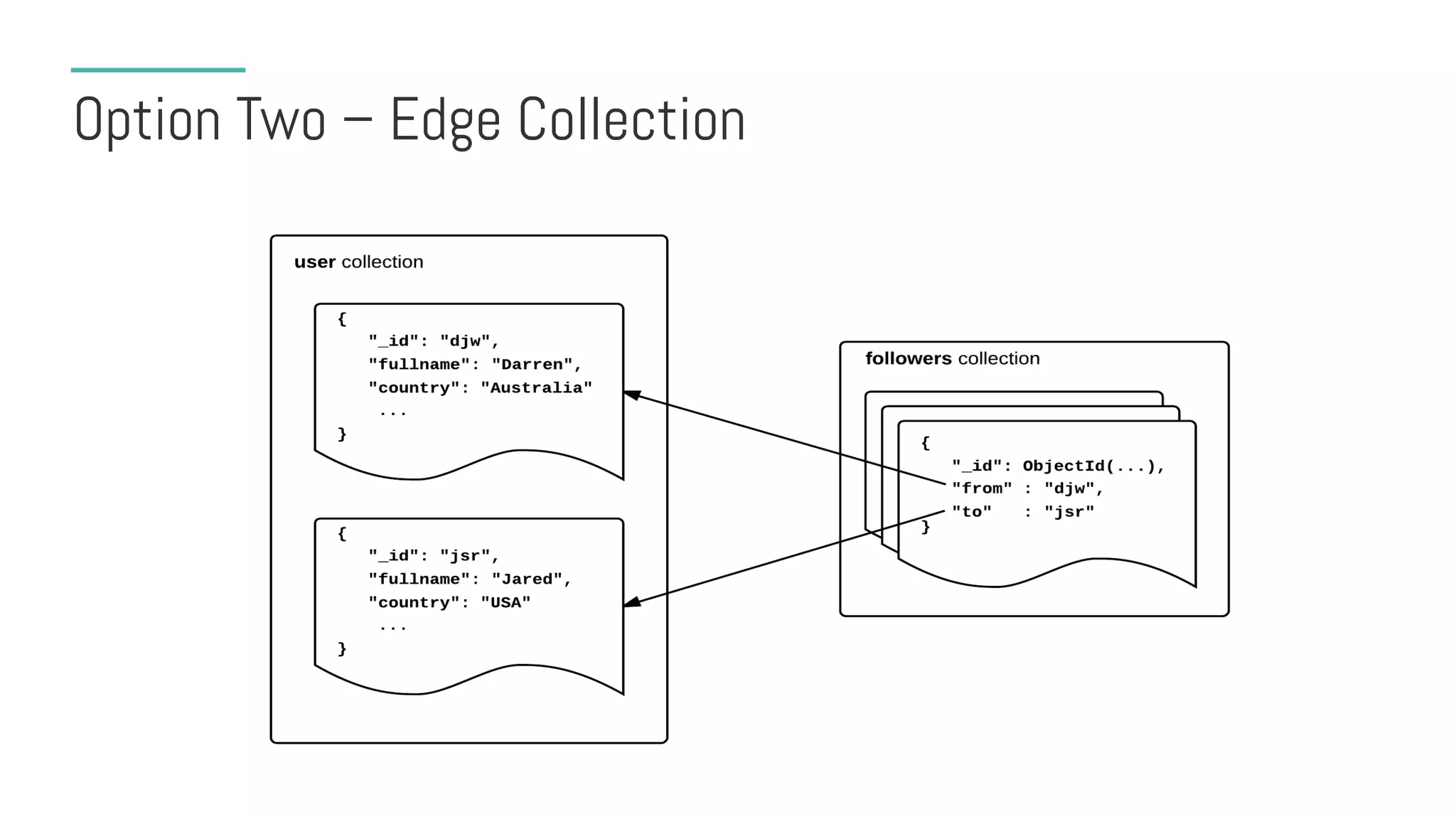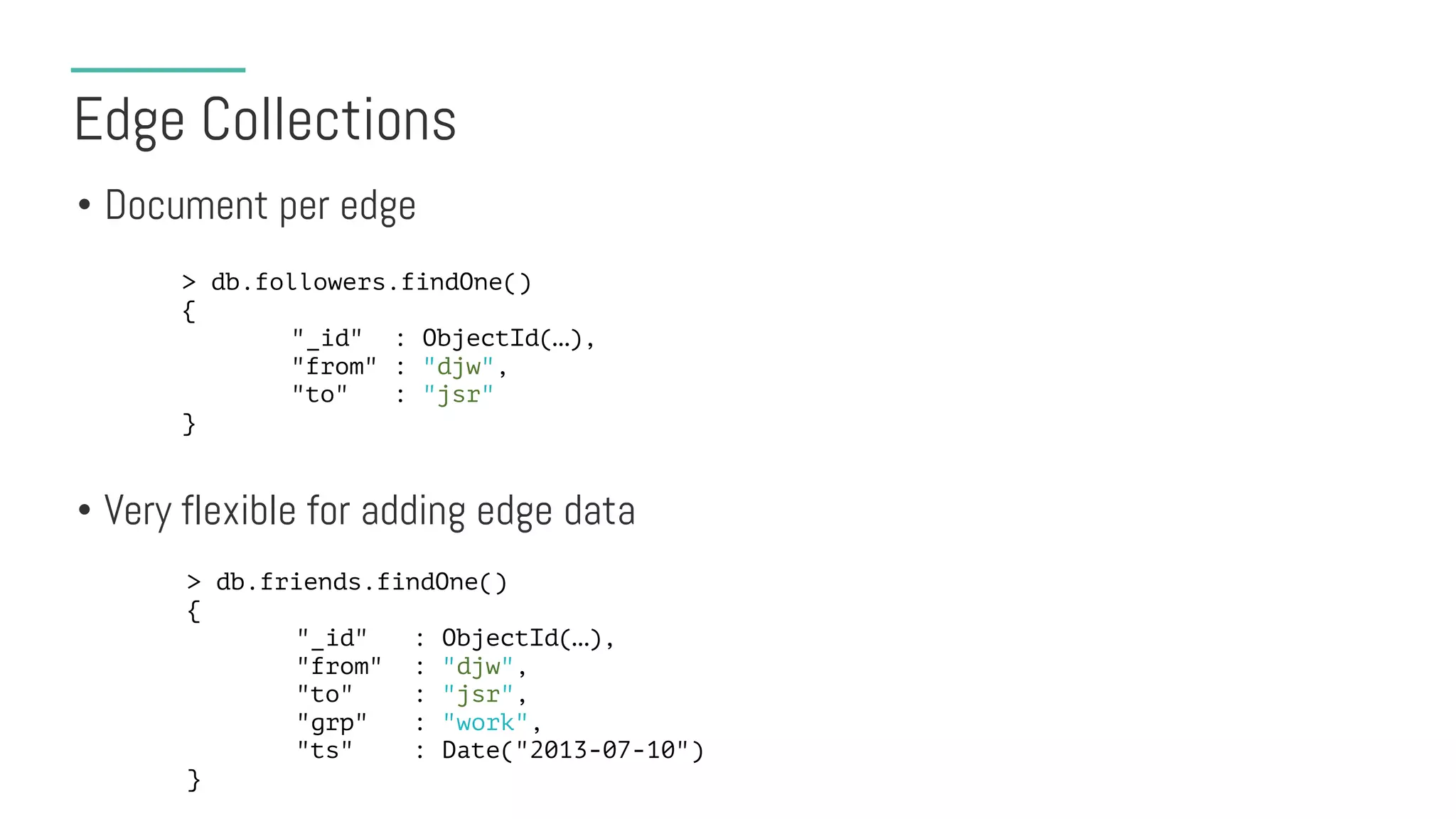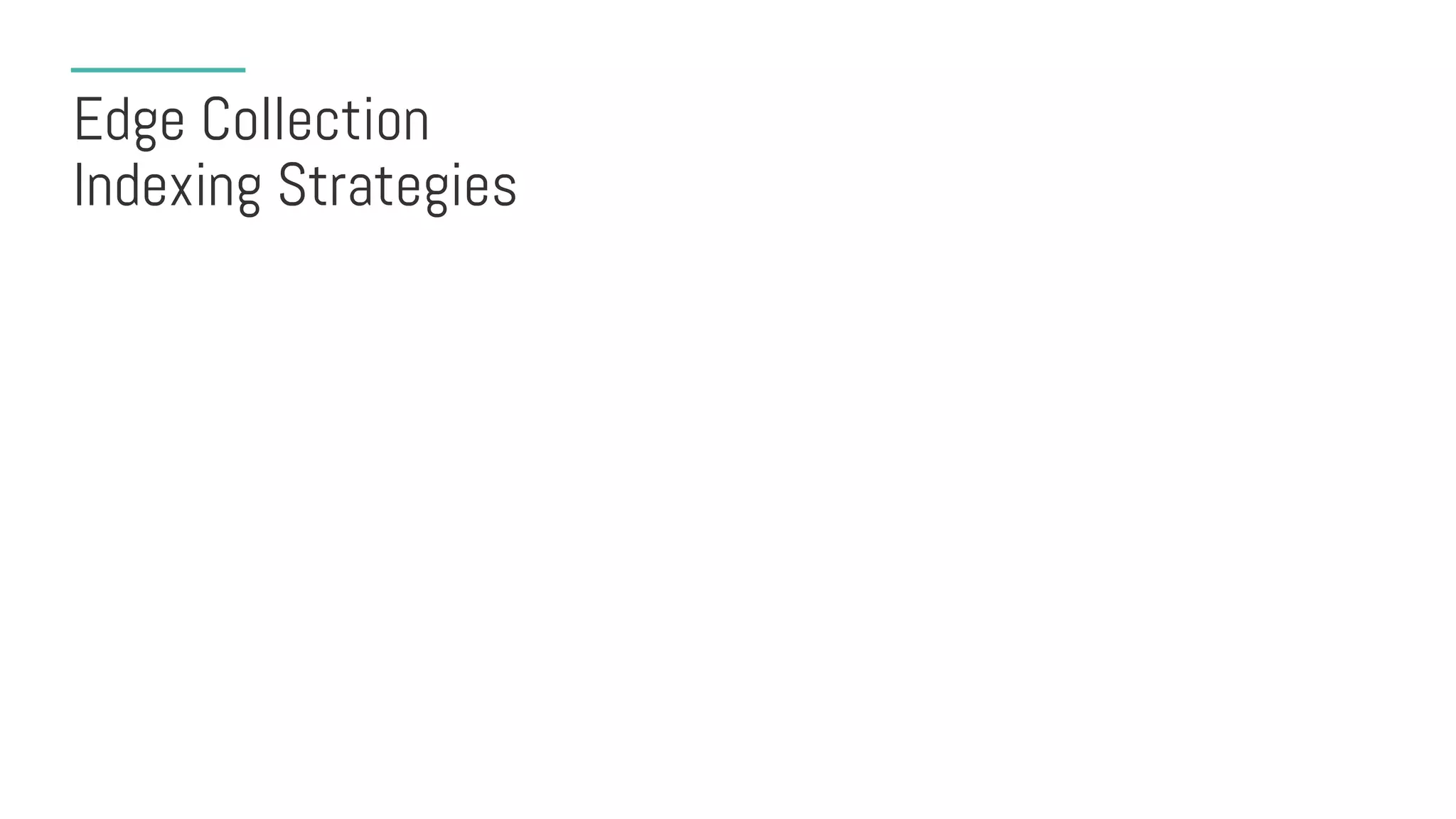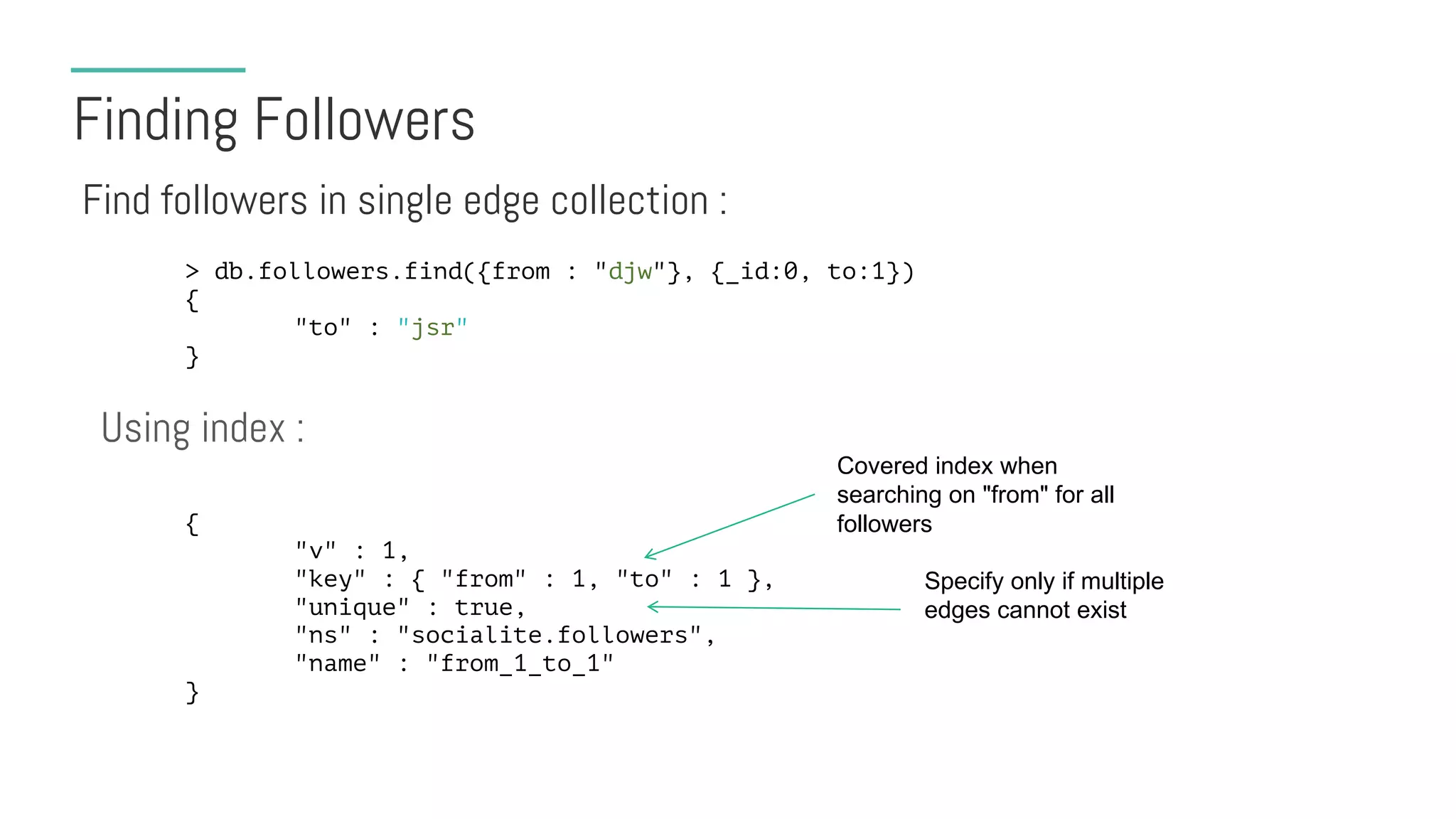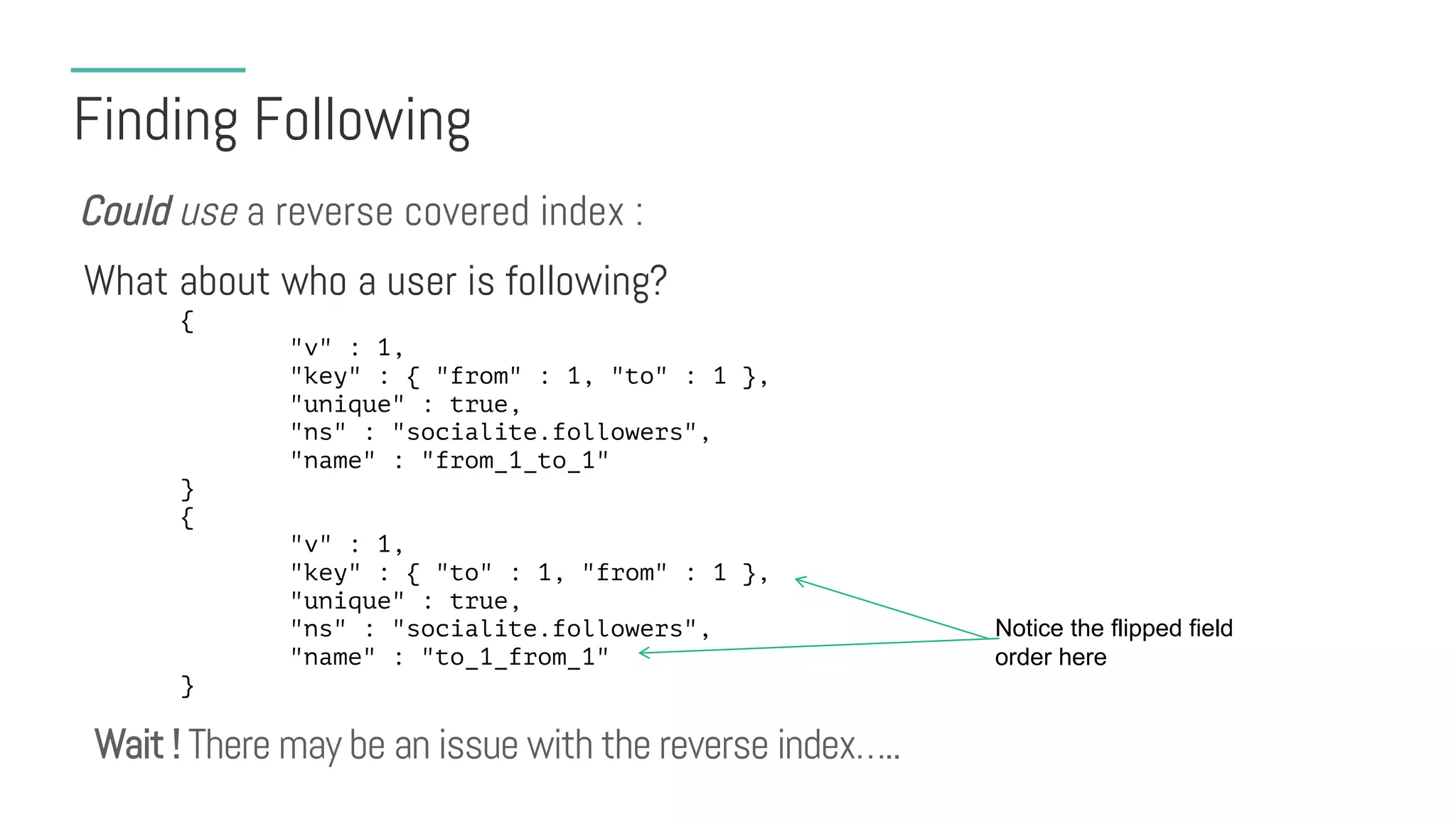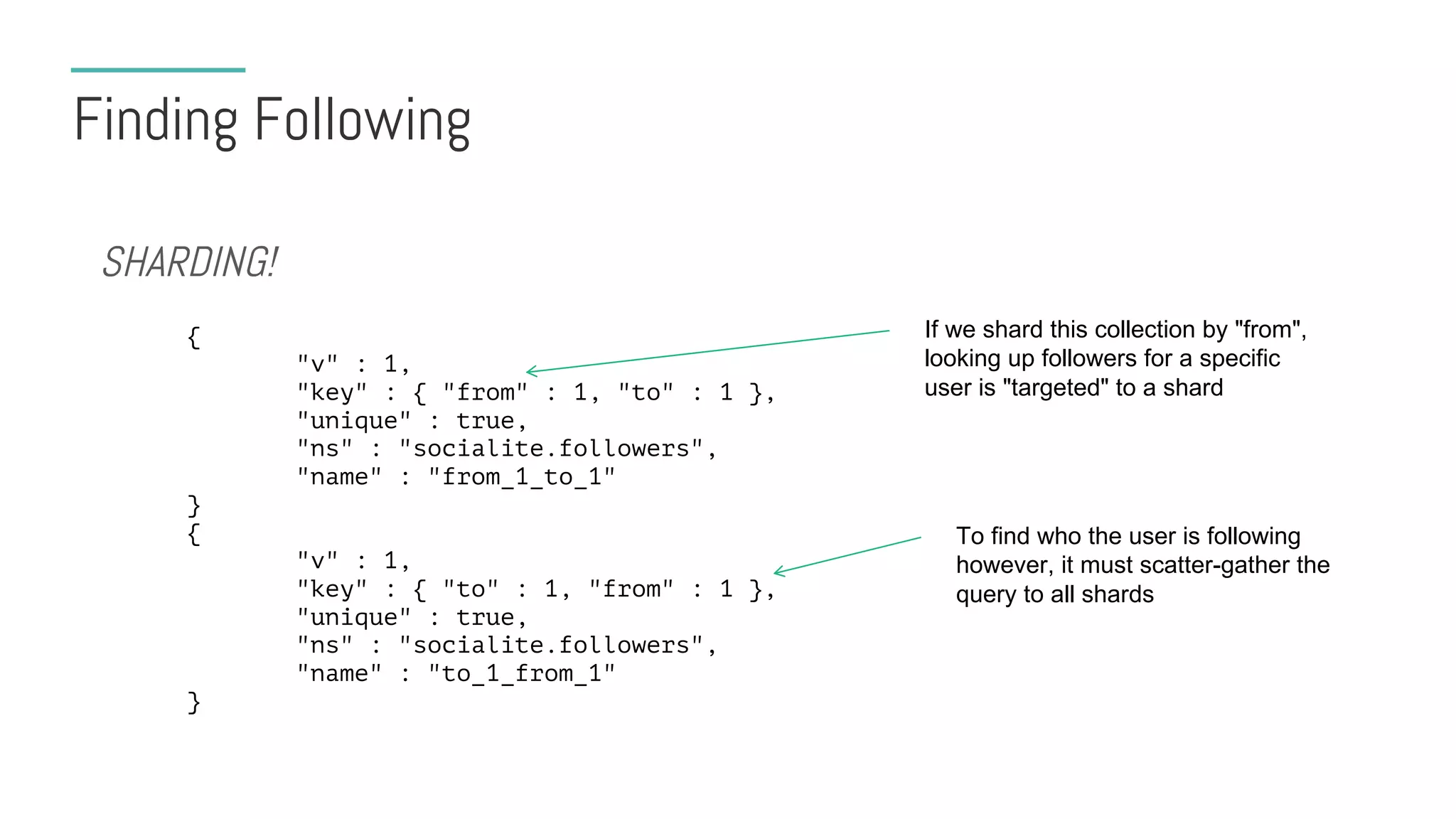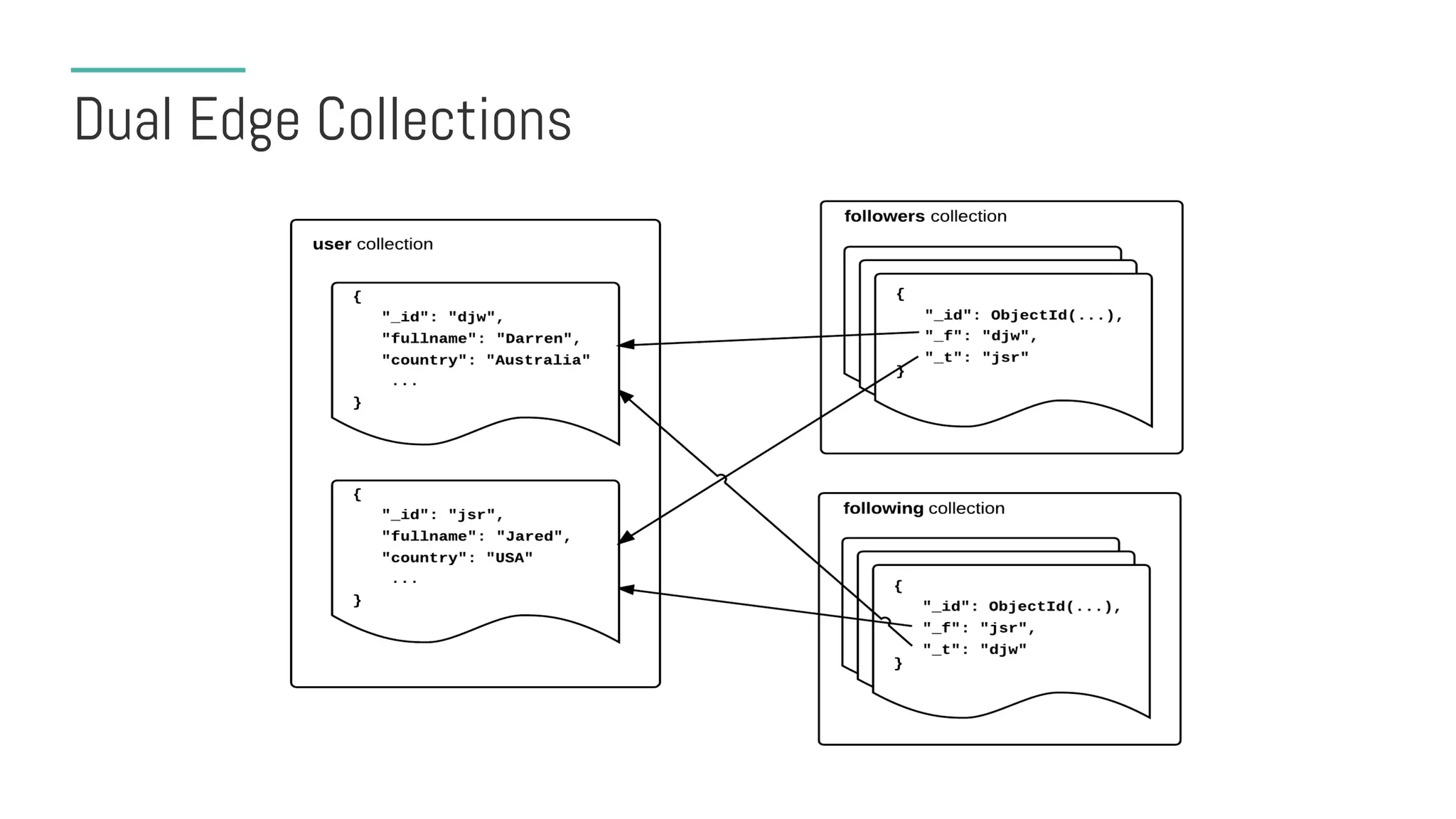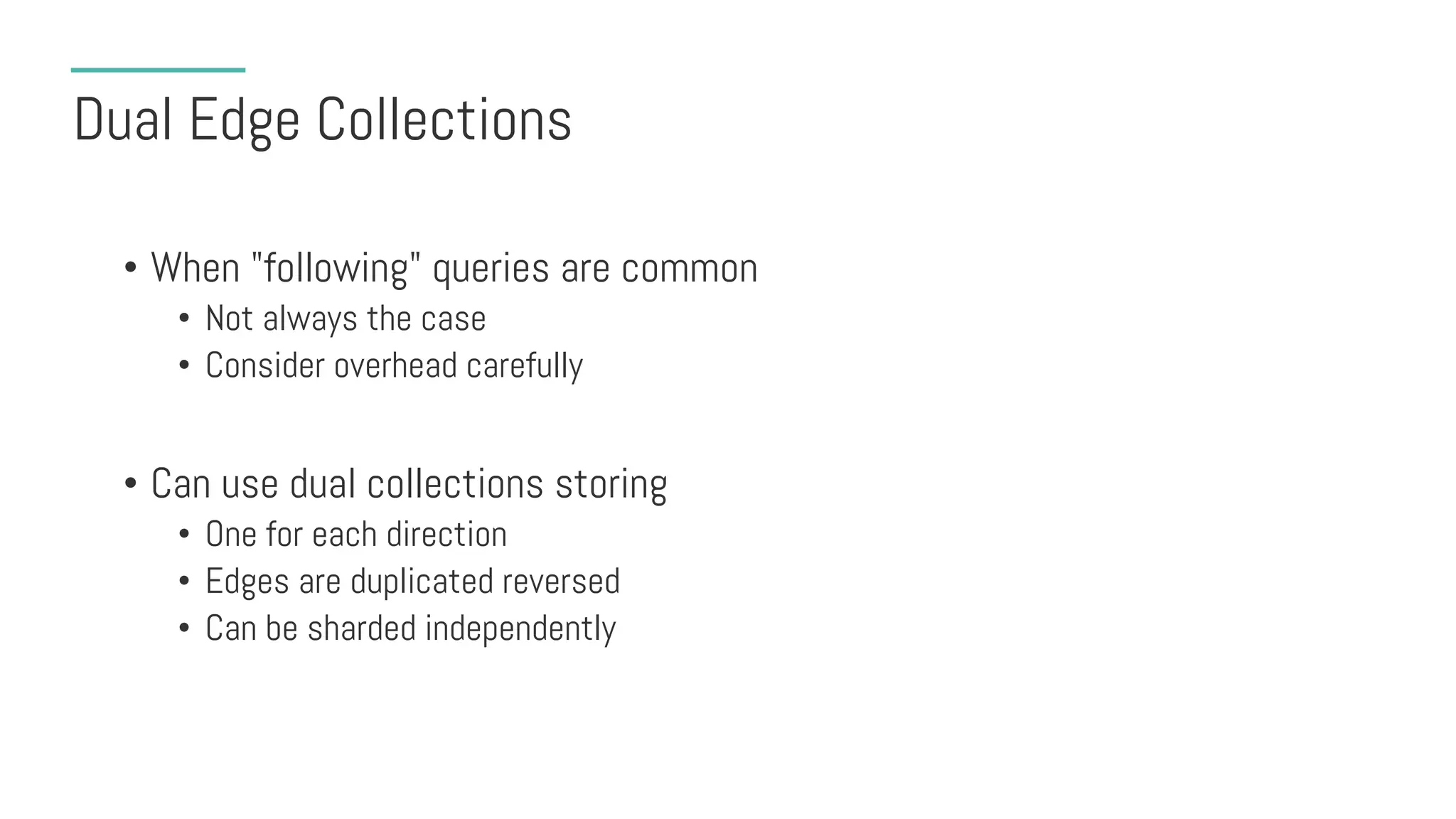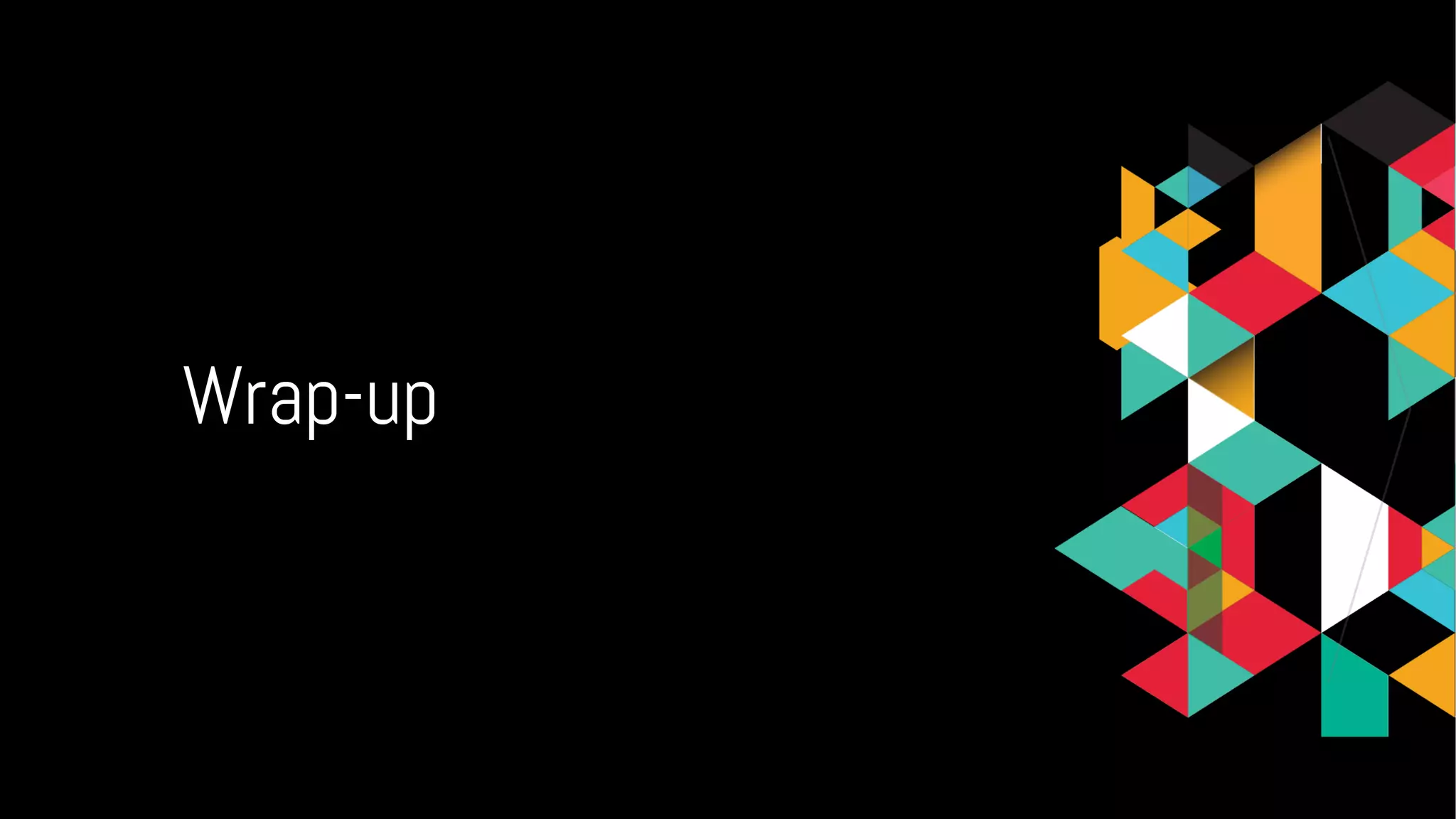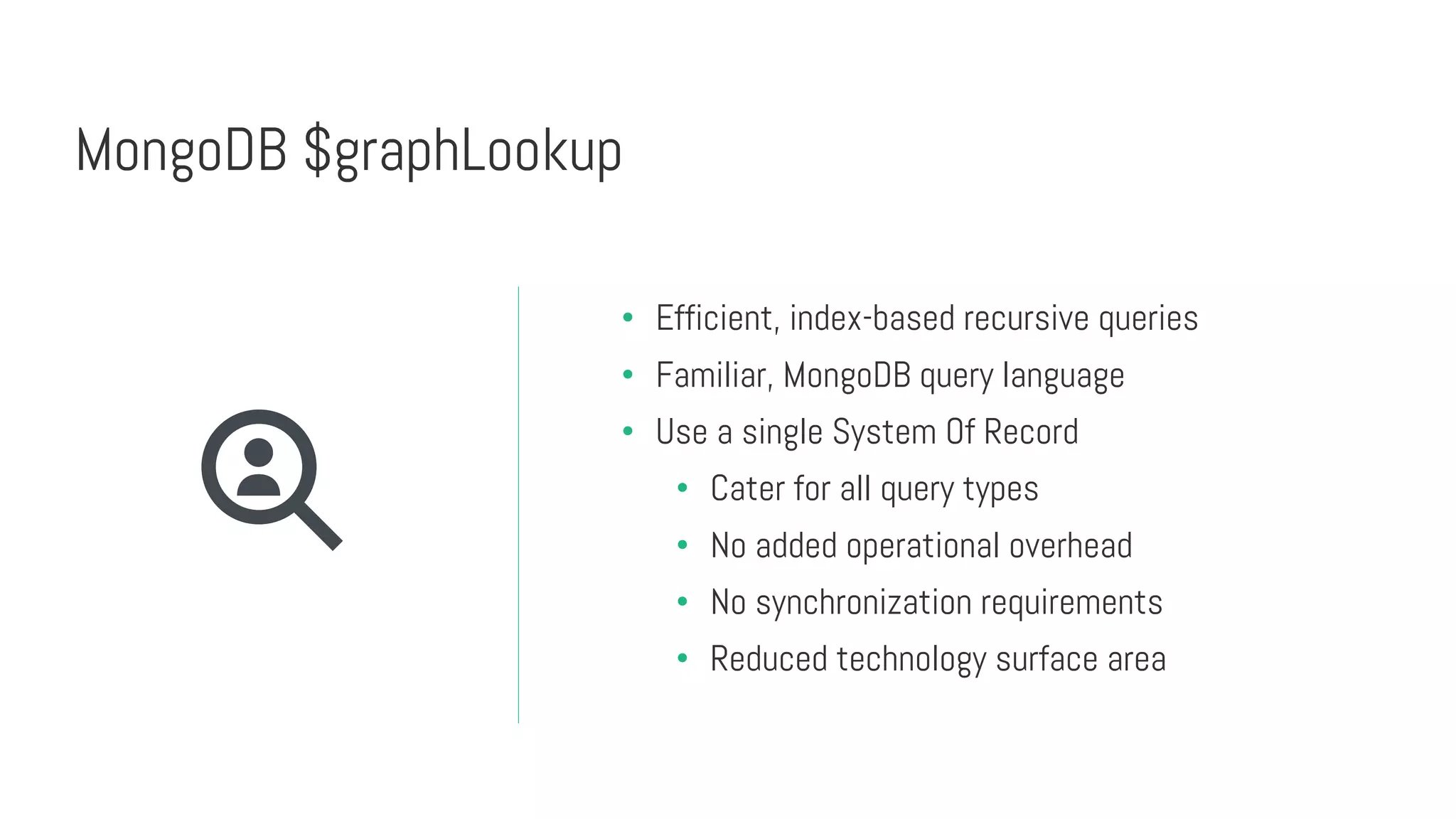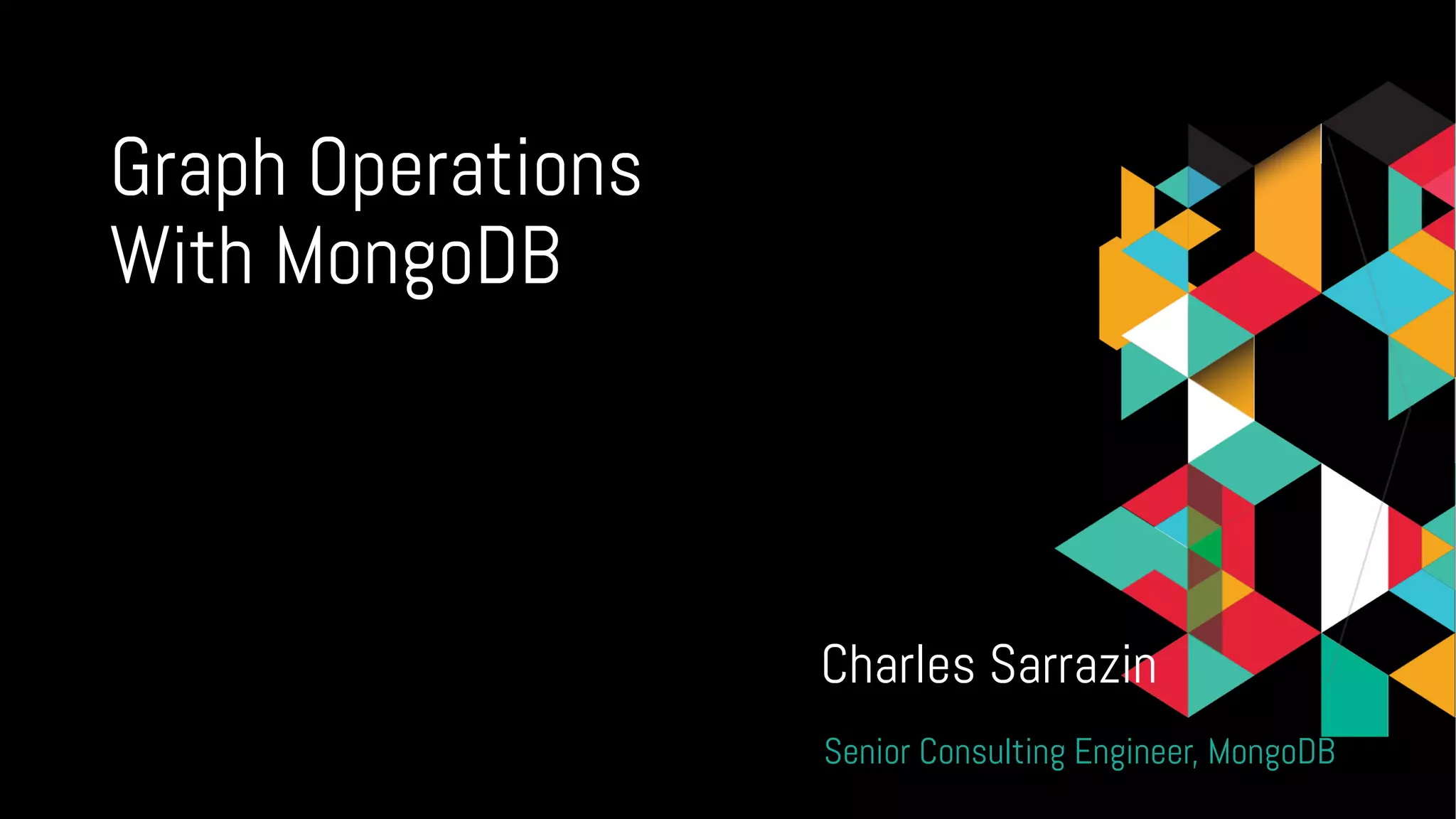The document provides a comprehensive overview of graph operations using MongoDB, highlighting new lookup operators, schema design, and performance considerations. It discusses use cases such as social networks, air travel options, and product categorization, demonstrating how MongoDB can handle complex graph-like relationships effectively. The document also emphasizes the advantages and challenges of using MongoDB for graph databases, including schema design options and query language syntax.
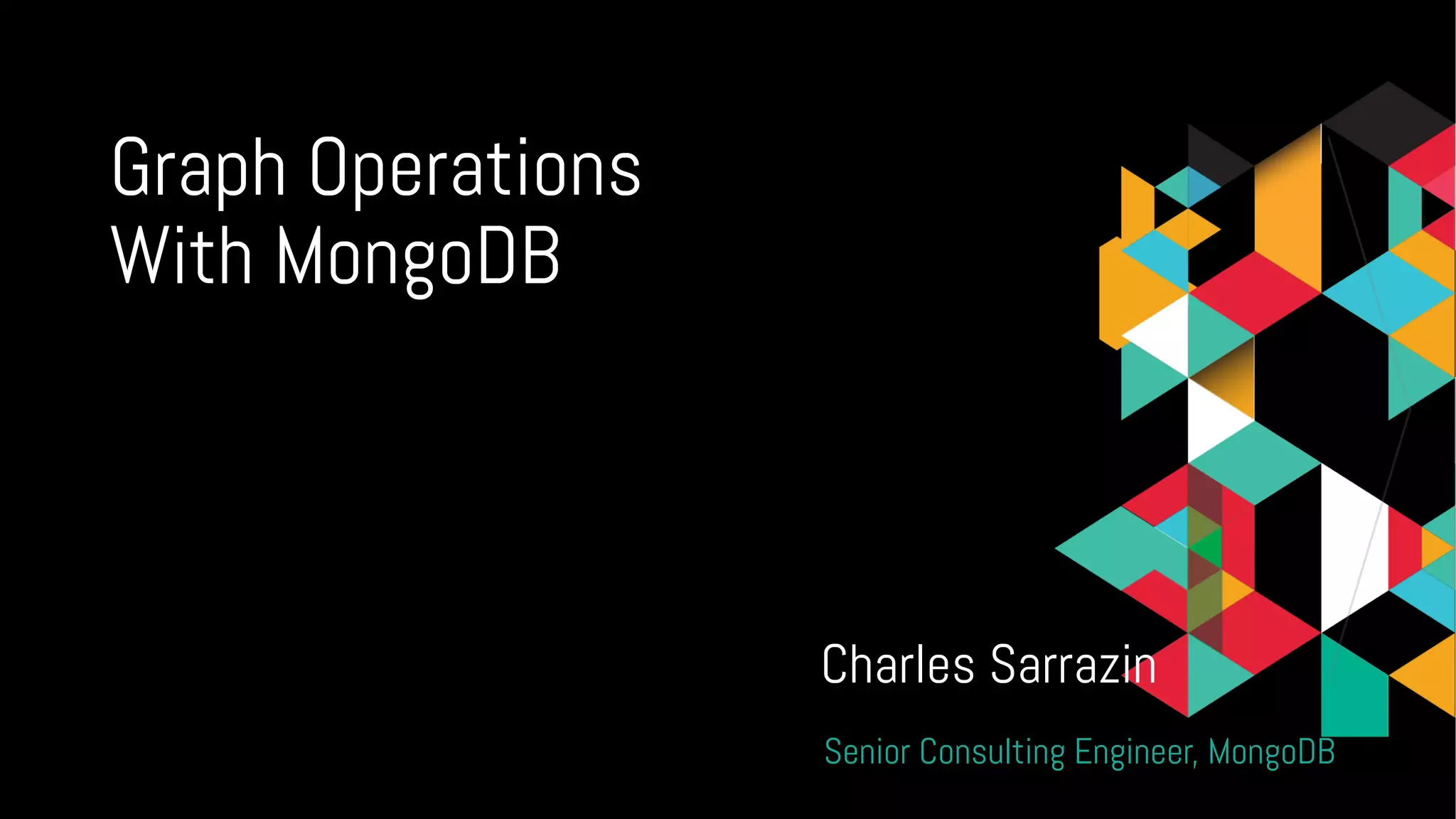
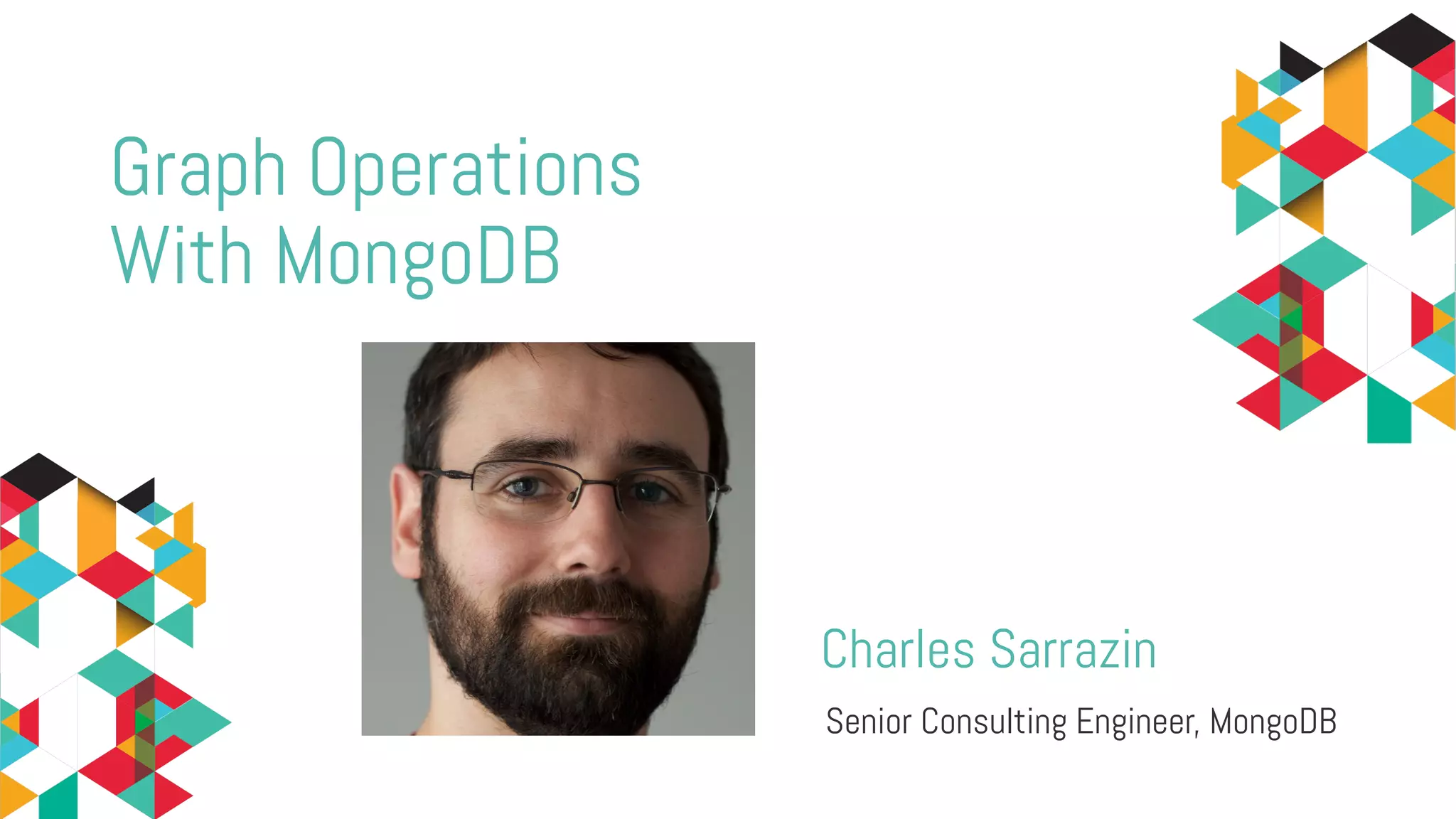
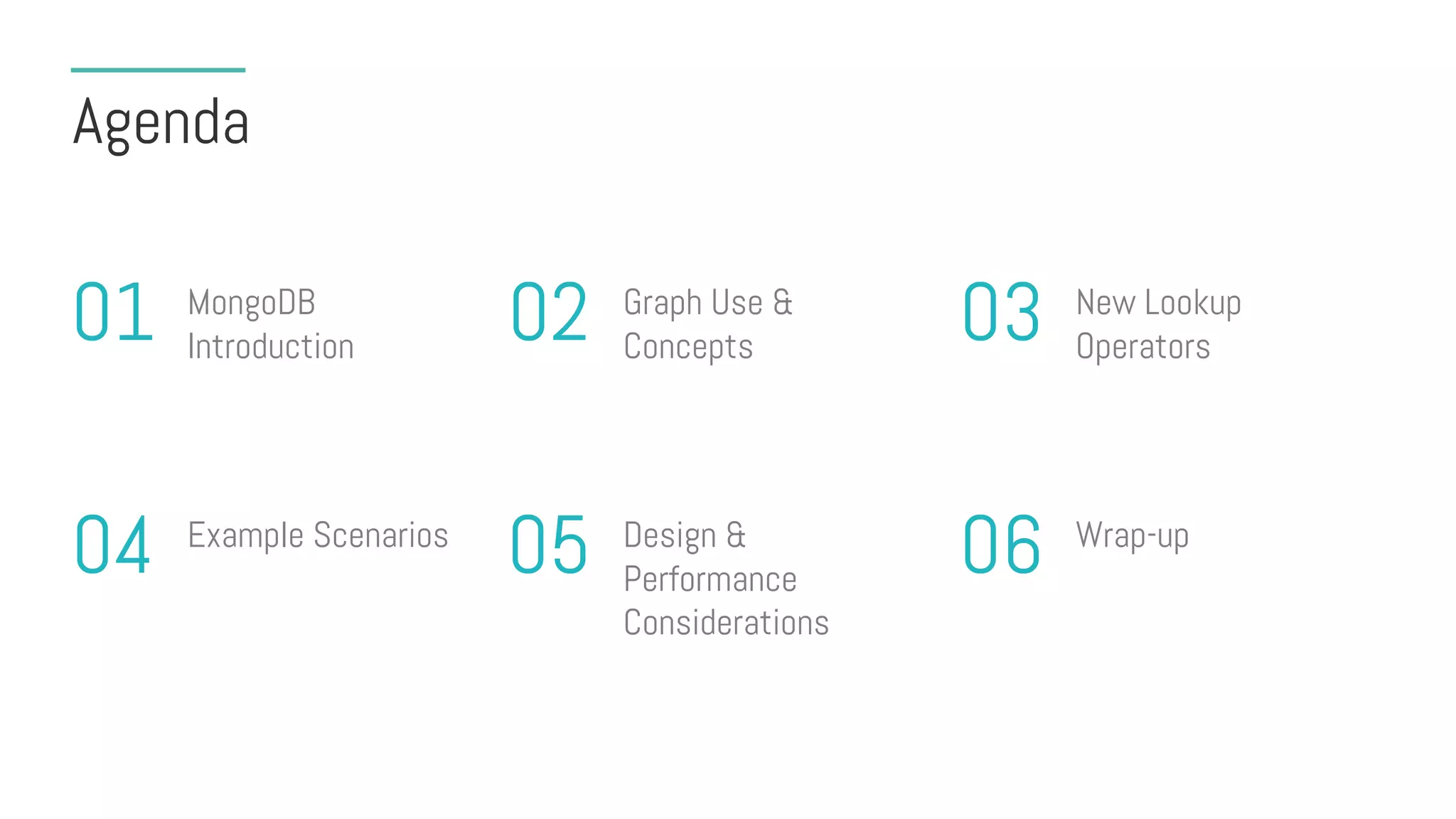
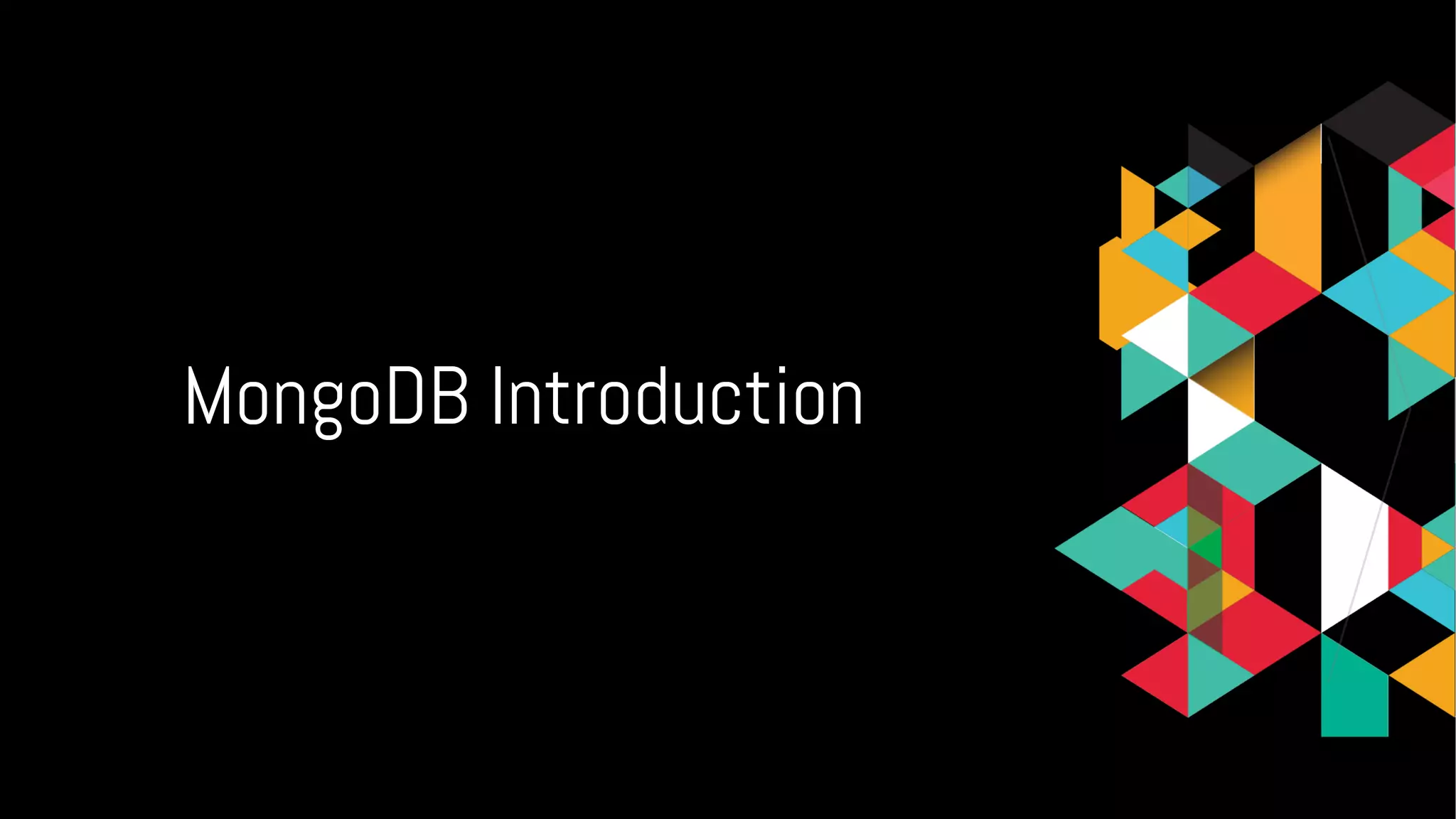
![Documents
{
first_name: ‘Paul’,
surname: ‘Miller’,
cell: 447557505611,
city: ‘London’,
location: [45.123,47.232],
profession: [‘banking’, ‘finance’, ‘trader’],
cars: [
{ model: ‘Bentley’,
year: 1973,
value: 100000, … },
{ model: ‘Rolls Royce’,
year: 1965,
value: 330000, … }
]
}
Fields can contain an array
of sub-documents
Fields
Typed field values
Fields can contain arrays
Number](https://image.slidesharecdn.com/charlessarrazingraphoperations-170209125805/75/Webinar-Working-with-Graph-Data-in-MongoDB-5-2048.jpg)
![Query Language
db.collection.find({'city':'London'})
db.collection.find({'profession':{'$in':['banking','trader']}},{'surname':1,'profession':1})
db.collection.find({'cars.year':{'$lte':1968}}).sort({'surname':1}).limit(10)
db.collection.find({'cars.model':'Bentley','cars.year':{'$lt':1966}})
db.collection.find({'cars':{'$elemMatch':{'model':'Bentley','year':{'$lt':1966}}}})
db.collection.find({'location':{'$geoWithin': { '$geometry': {
'type': 'Polygon',
coordinates: [ <array-of-coordinates> ]
}}}})
SecondaryIndexes
compound, geospatial, text, multikey, hashed,
unique, sparse, partial, TTL](https://image.slidesharecdn.com/charlessarrazingraphoperations-170209125805/75/Webinar-Working-with-Graph-Data-in-MongoDB-6-2048.jpg)
![Query Language
db.collection.aggregate ( [
{$match:{'profession':{'$in':['banking','trader']}}},
{$addFields:{'surnameLower':{$toLower:"$surname"},'prof':{$ifNull:["$prof","Unknown"]}},
{$group: { ... } },
{$sort: { ... } },
{$limit: { ... } },
{$match: { ... } },
...
] )
Aggregation pipeline](https://image.slidesharecdn.com/charlessarrazingraphoperations-170209125805/75/Webinar-Working-with-Graph-Data-in-MongoDB-7-2048.jpg)
![Schema Design
{
first_name: ‘Paul’,
surname: ‘Miller’,
cell: 447557505611,
city: ‘London’,
location: [45.123,47.232],
profession: [‘banking’, ‘finance’, ‘trader’],
cars: [
{ model: ‘Bentley’,
year: 1973,
value: 100000, … },
{ model: ‘Rolls Royce’,
year: 1965,
value: 330000, … }
]
}
Embed
same
document](https://image.slidesharecdn.com/charlessarrazingraphoperations-170209125805/75/Webinar-Working-with-Graph-Data-in-MongoDB-8-2048.jpg)
![Schema Design
{
first_name: ‘Paul’,
surname: ‘Miller’,
cell: 447557505611,
city: ‘London’,
location: [45.123,47.232],
profession: [‘banking’, ‘finance’, ‘trader’],
cars: [
{ model: ‘Bentley’,
year: 1973,
value: 100000, … },
{ model: ‘Rolls Royce’,
year: 1965,
value: 330000, … }
]
}
Embed
same
document
{
first_name: ‘Paul’,
surname: ‘Miller’,
cell: 447557505611,
city: ‘London’,
location: [45.123,47.232],
profession: [‘banking’, ‘finance’, ‘trader’]
}
cars:
{ owner_id: 146
model: ‘Bentley’,
year: 1973,
value: 100000, … },
{ owner_id: 146
model: ‘Rolls Royce’,
year: 1965,
value: 330000, … }
Separate
Collection
with reference](https://image.slidesharecdn.com/charlessarrazingraphoperations-170209125805/75/Webinar-Working-with-Graph-Data-in-MongoDB-9-2048.jpg)
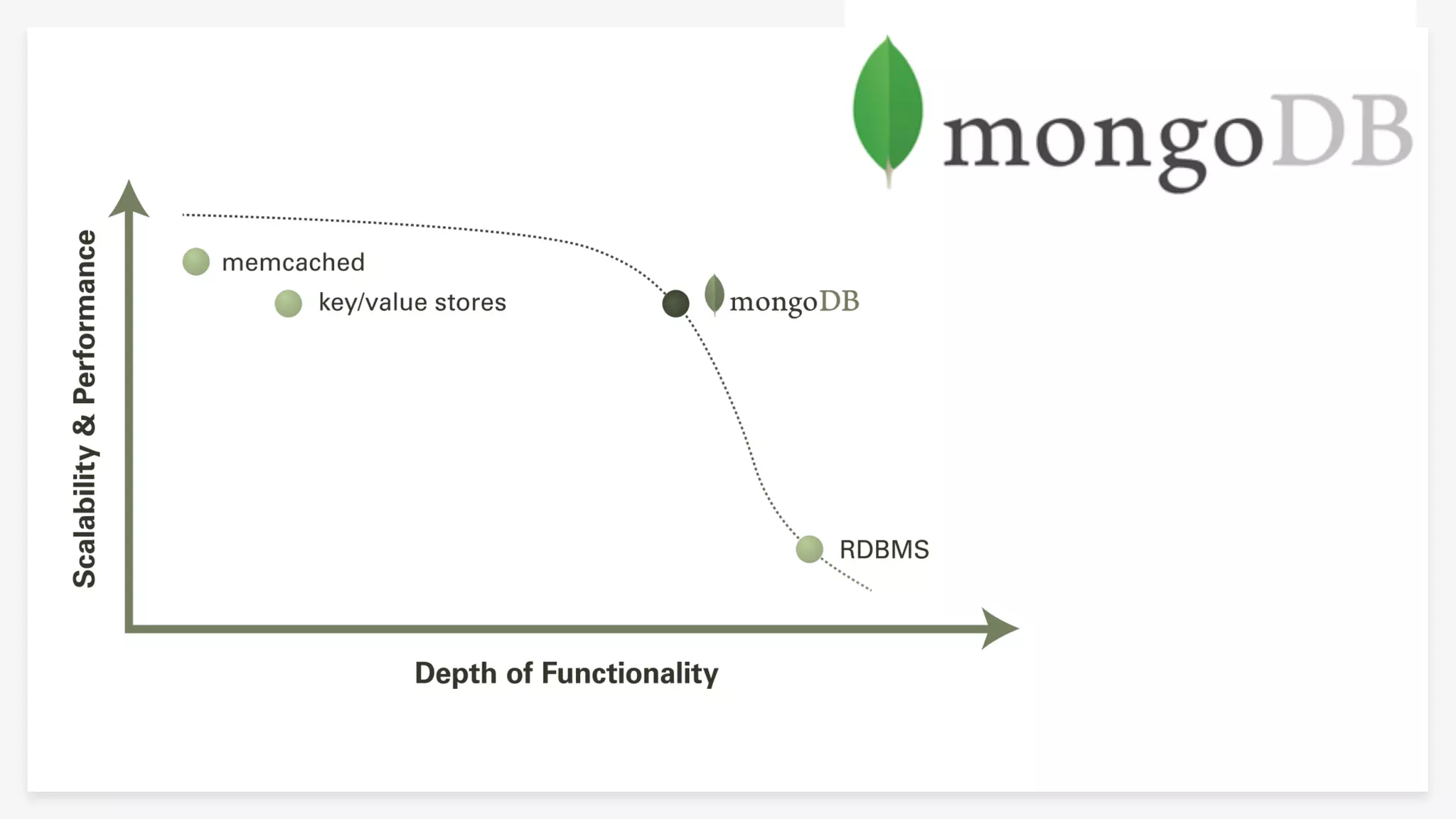
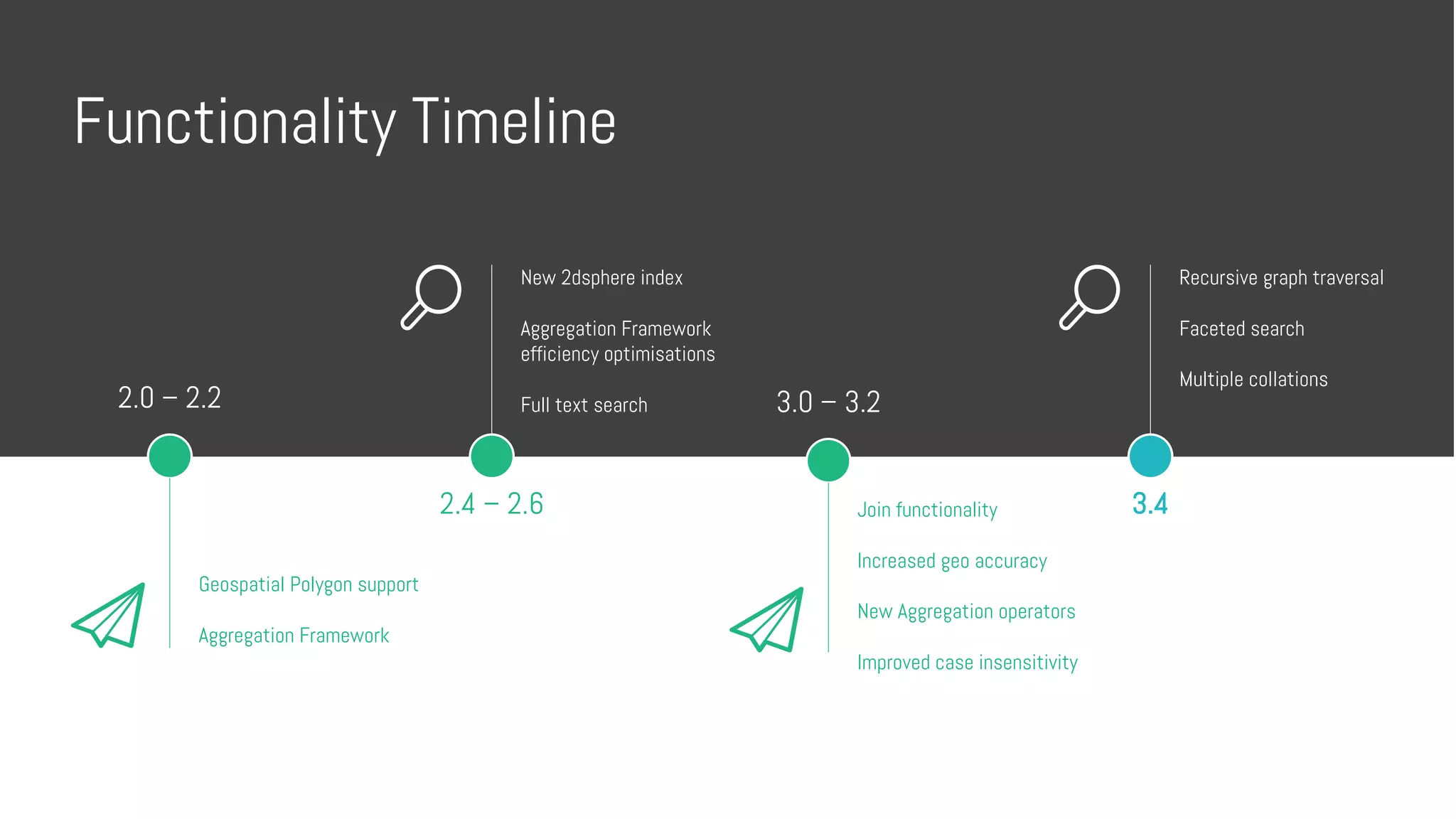
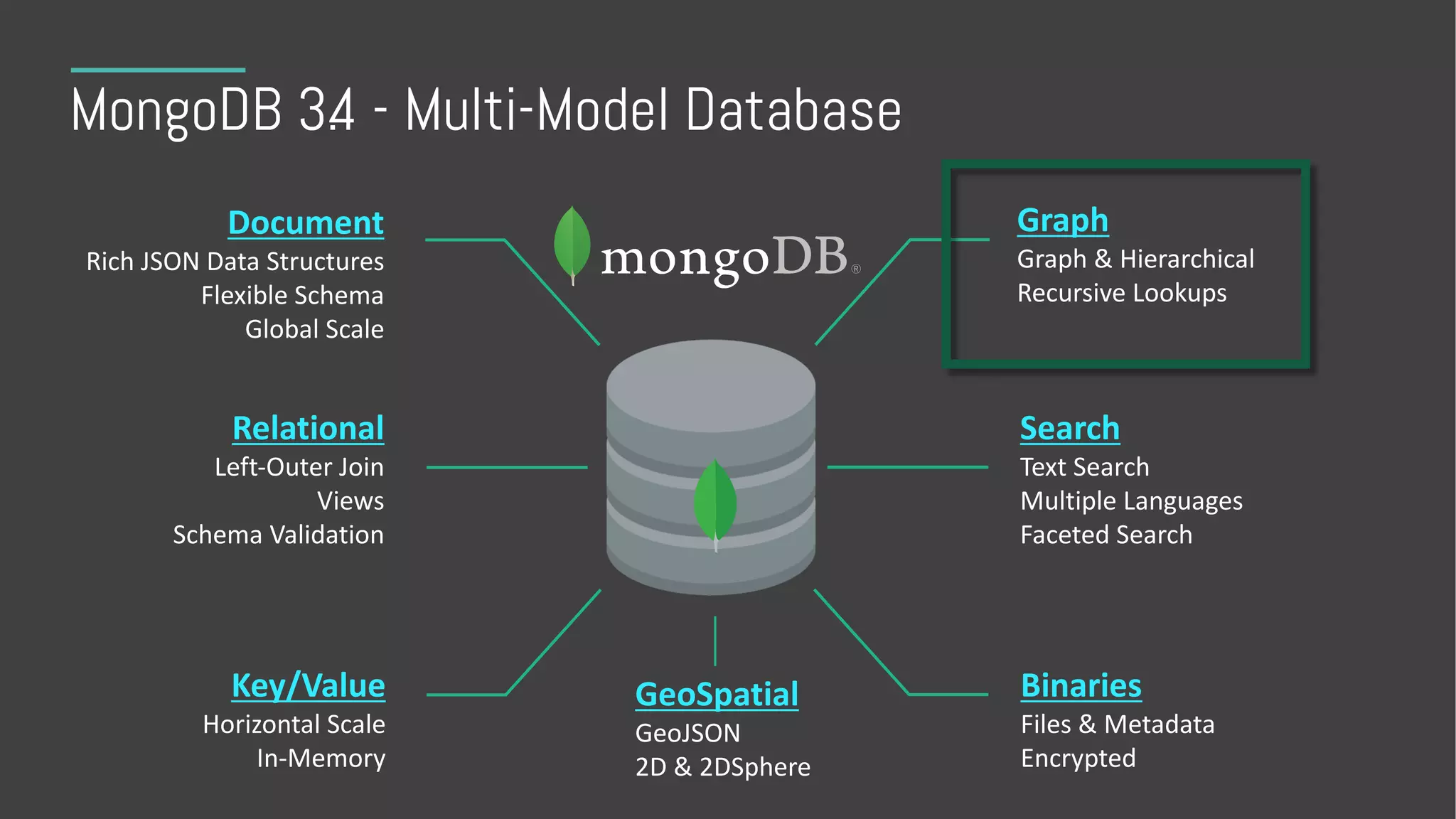
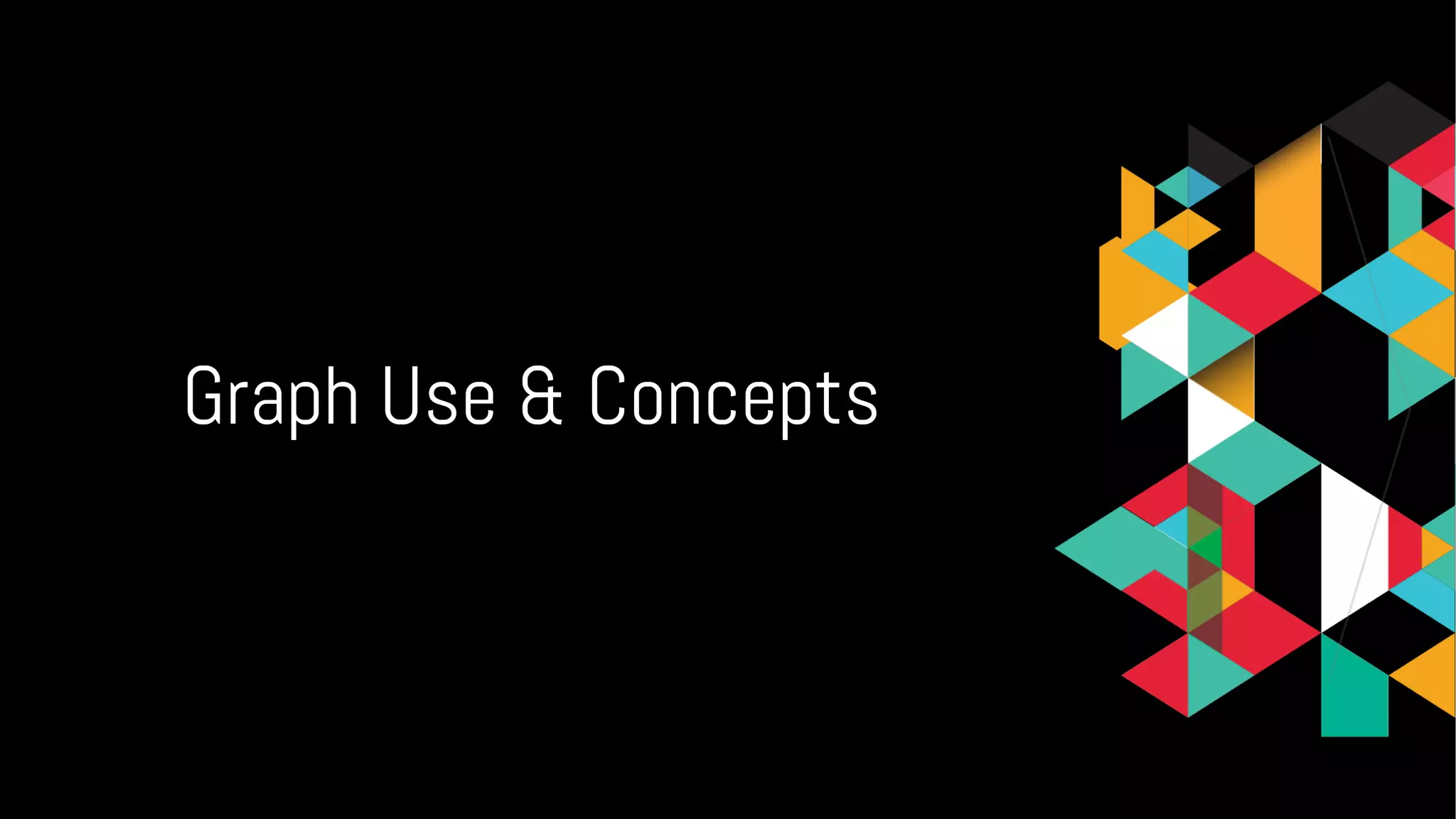
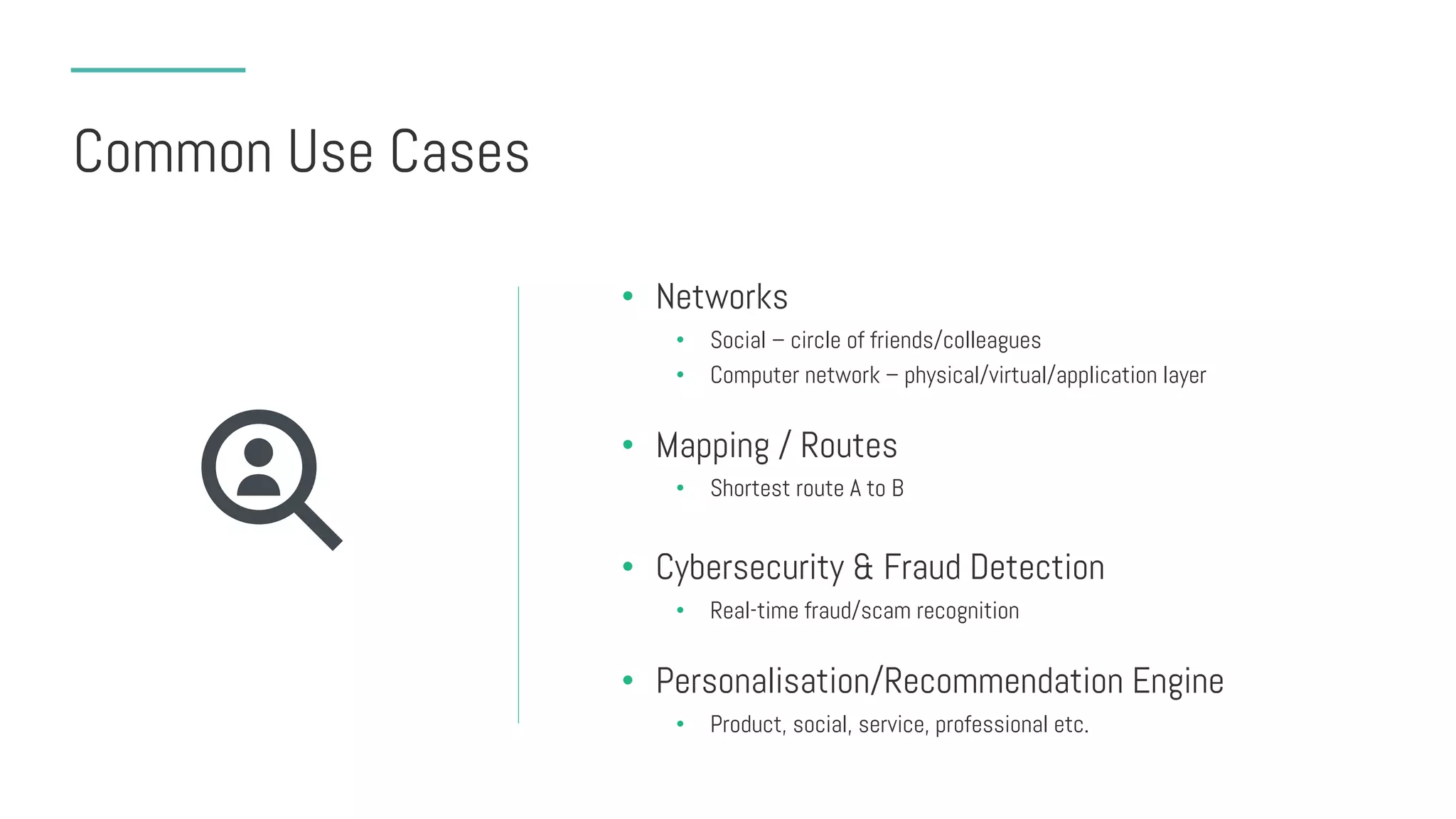
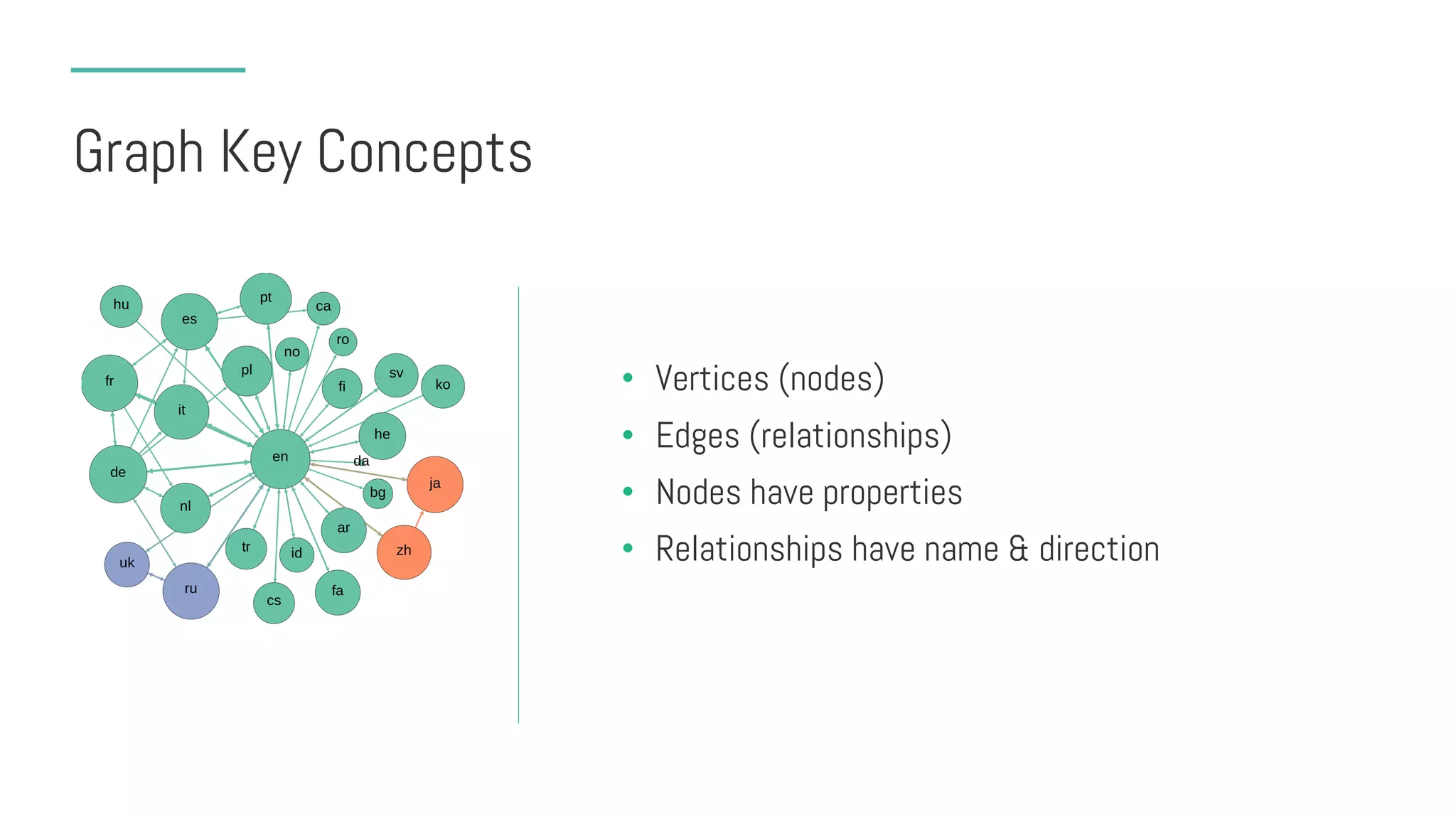
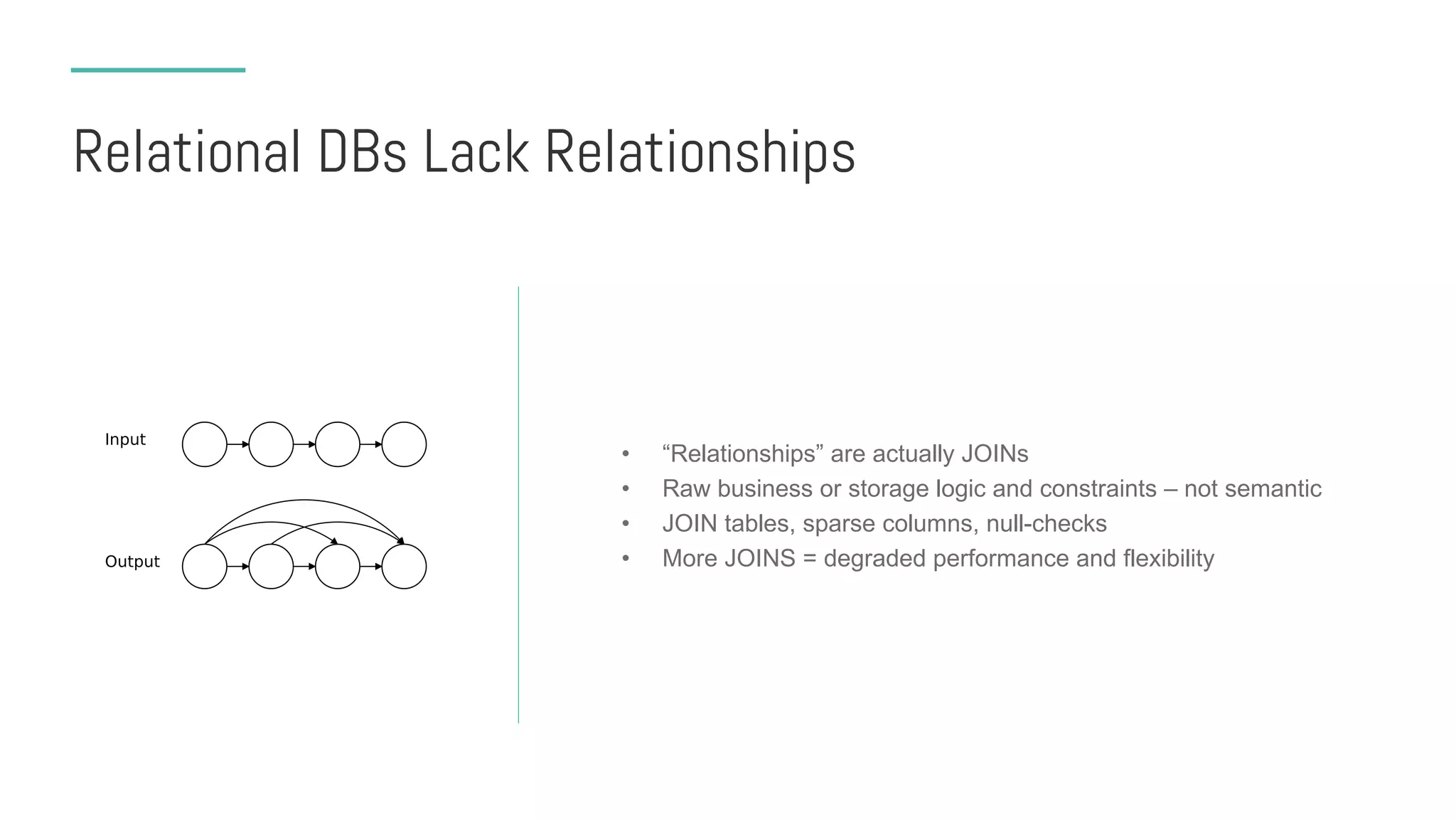
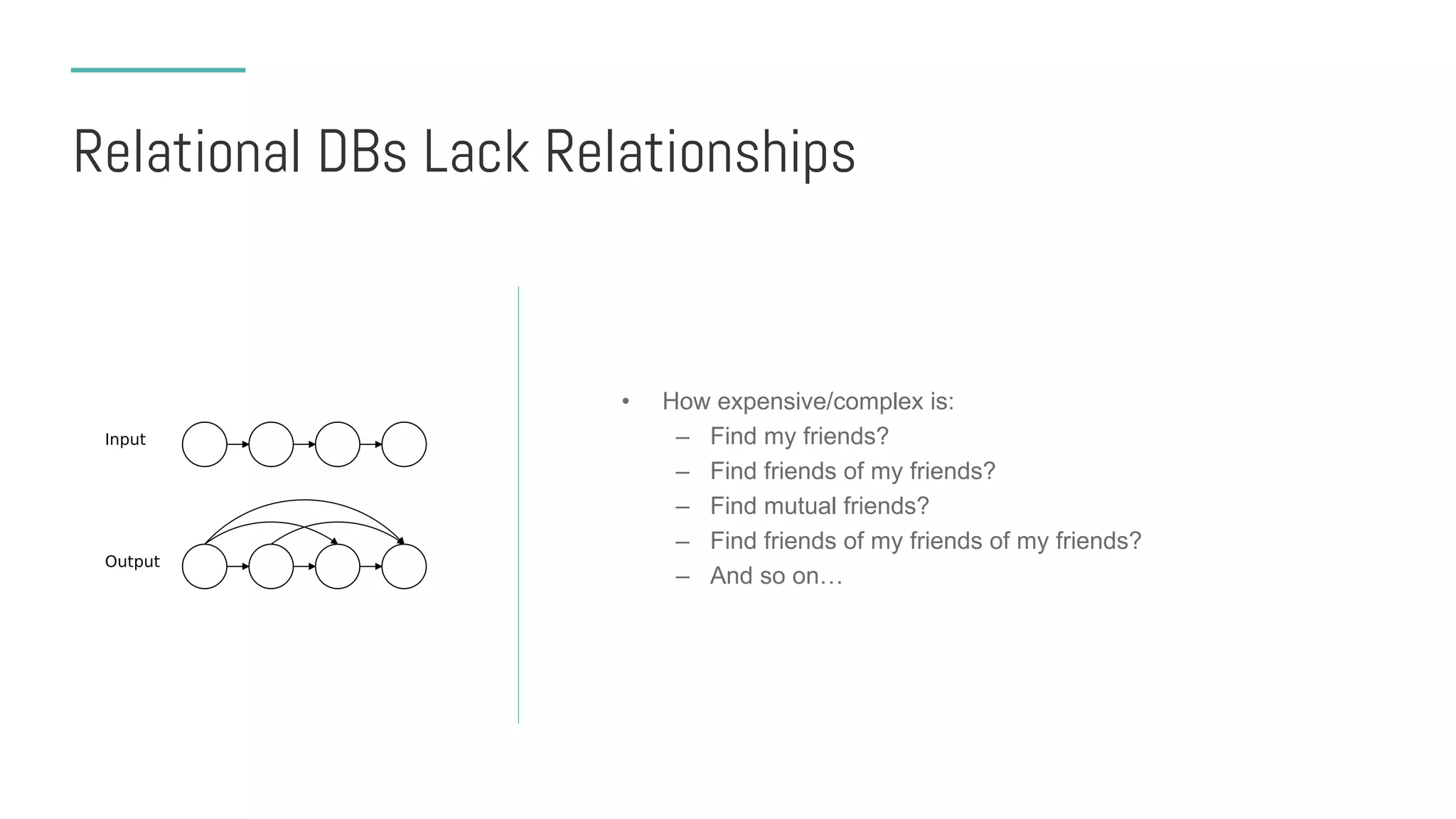
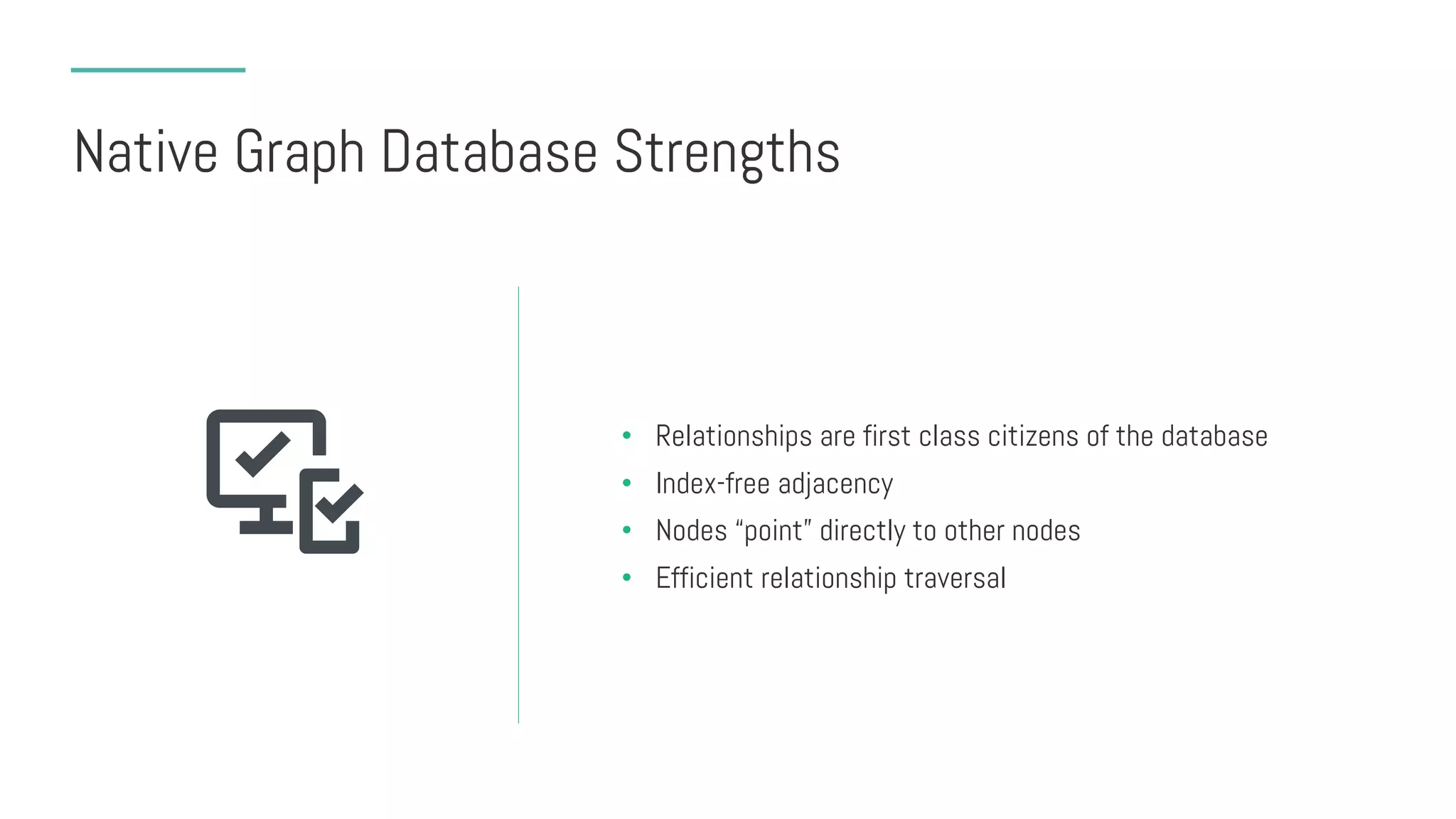
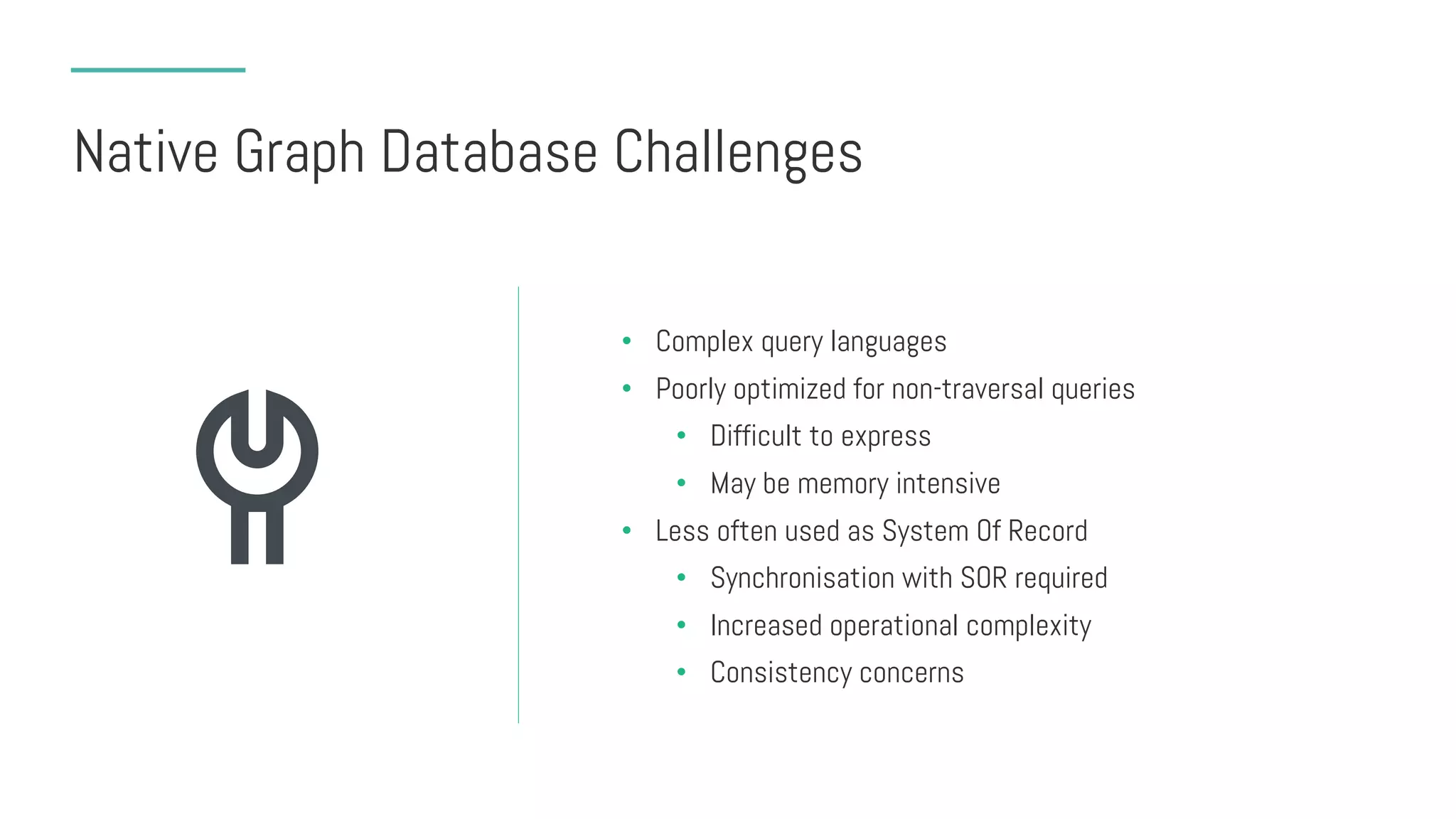
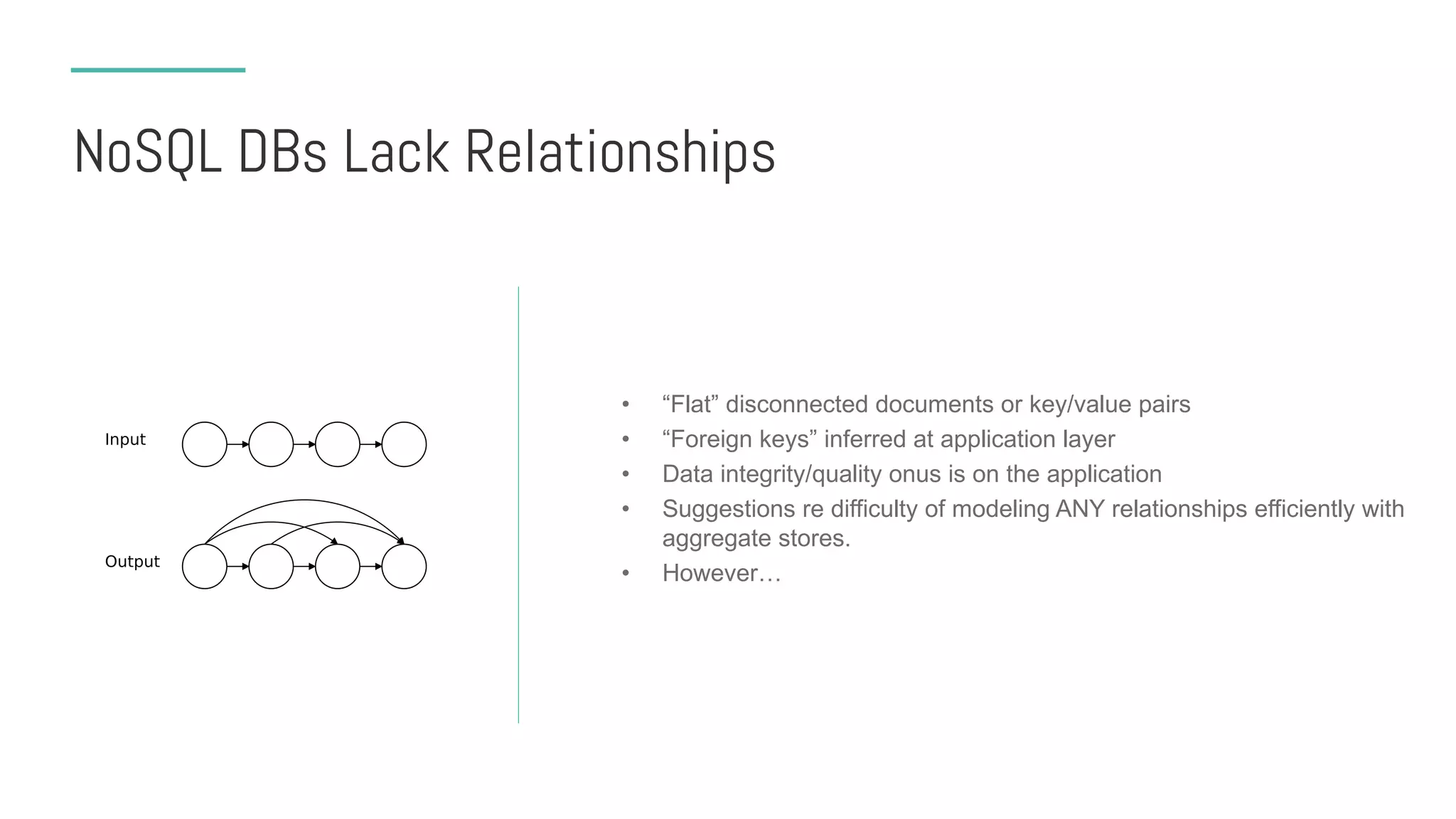
![Friends Network – Document Style
{
_id: 0,
name: "Bob Smith",
friends: ["Anna Jones", "Chris Green"]
},
{
_id: 1,
name: "Anna Jones",
friends: ["Bob Smith", "Chris Green", "Joe Lee"]
},
{
_id: 2,
name: "Chris Green",
friends: ["Anna Jones", "Bob Smith"]
}](https://image.slidesharecdn.com/charlessarrazingraphoperations-170209125805/75/Webinar-Working-with-Graph-Data-in-MongoDB-21-2048.jpg)
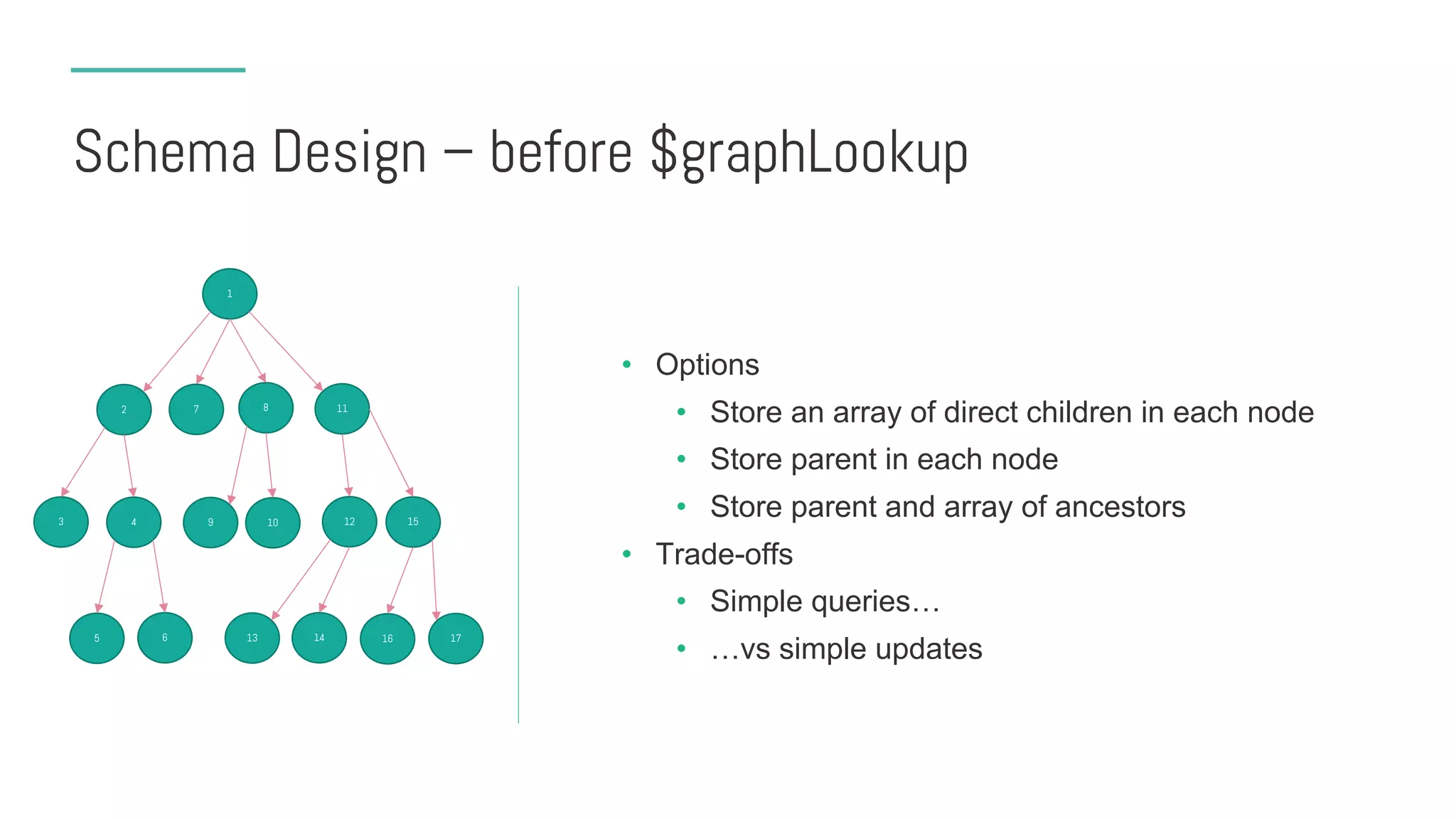
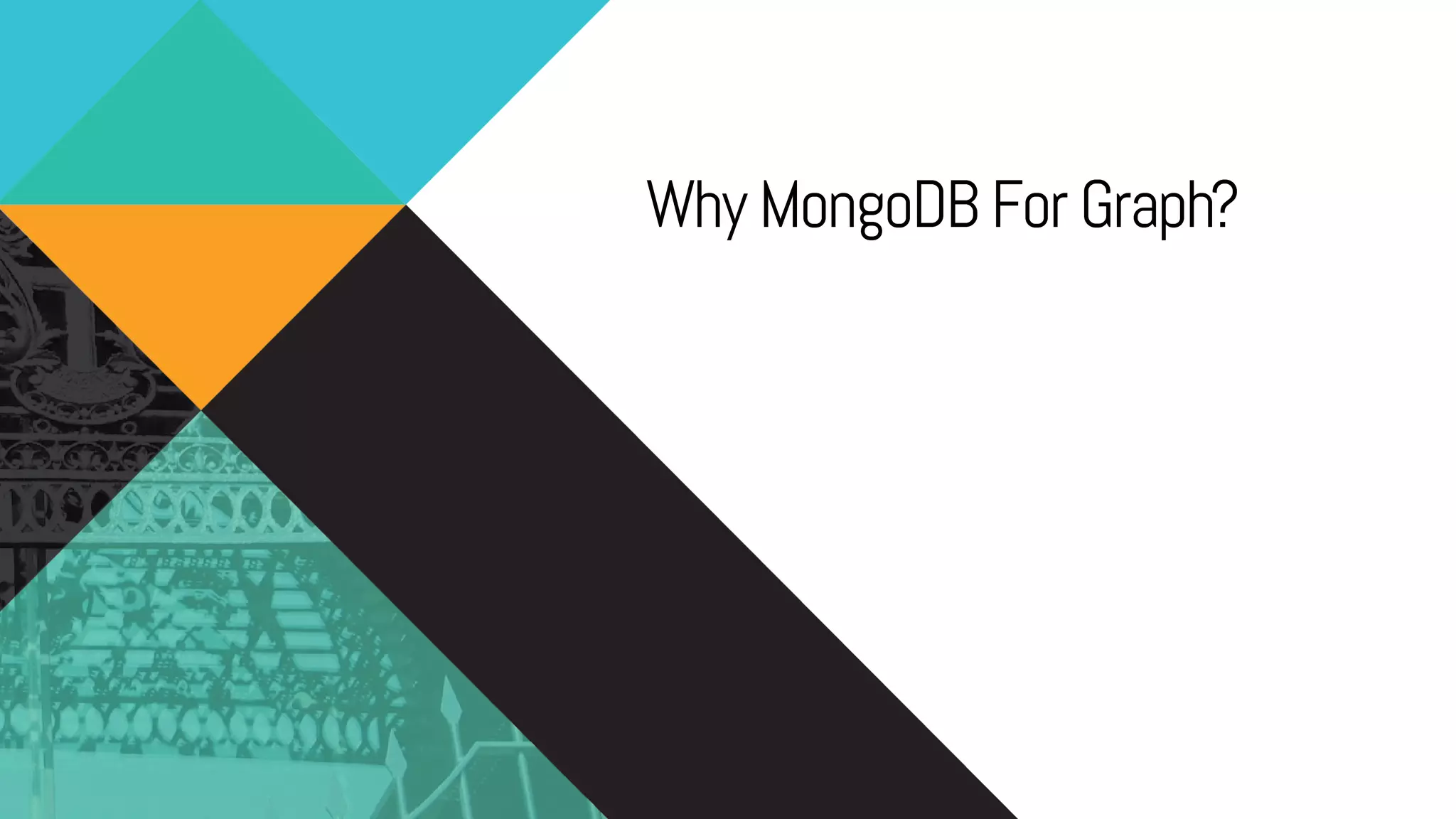
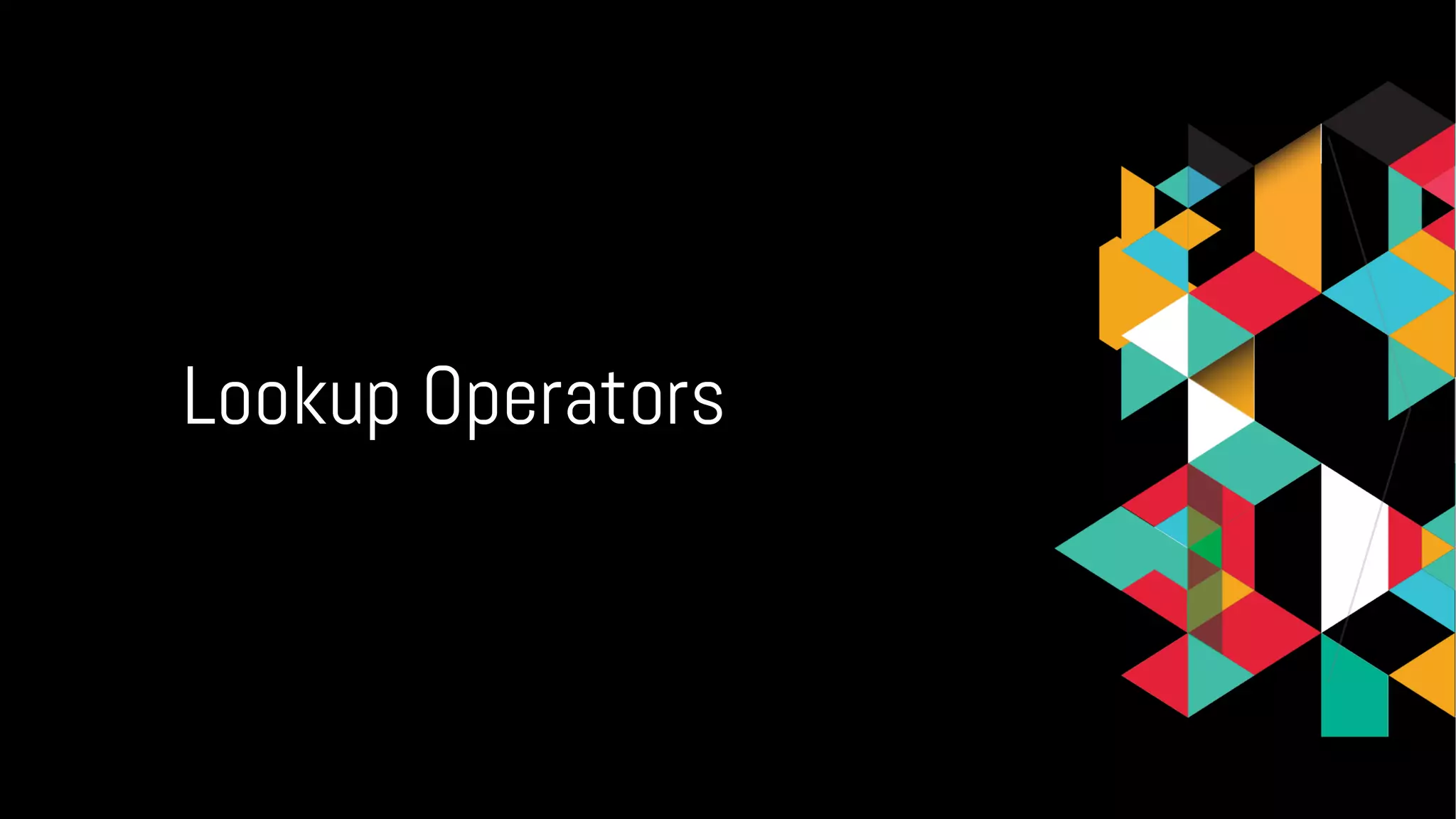
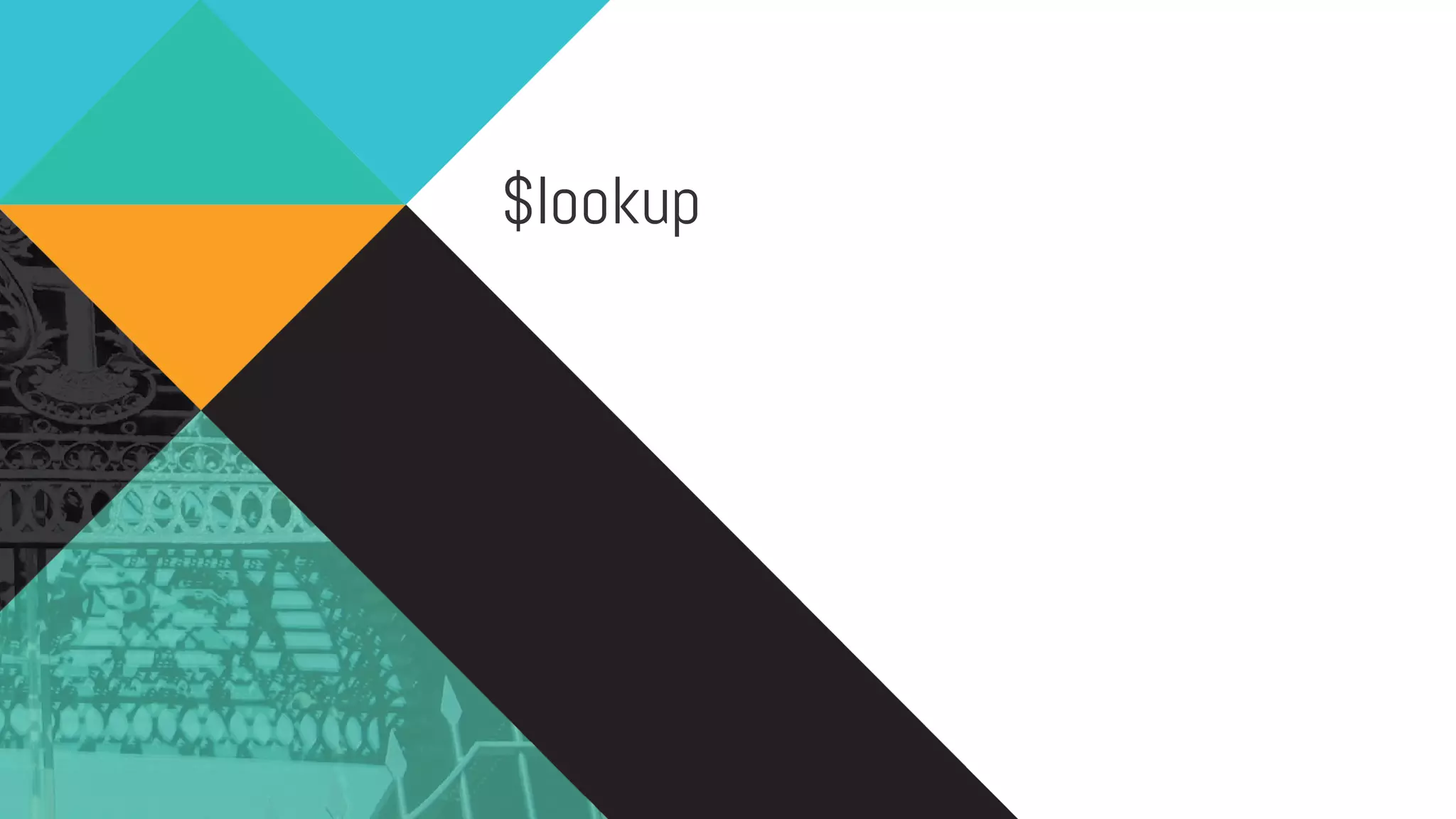
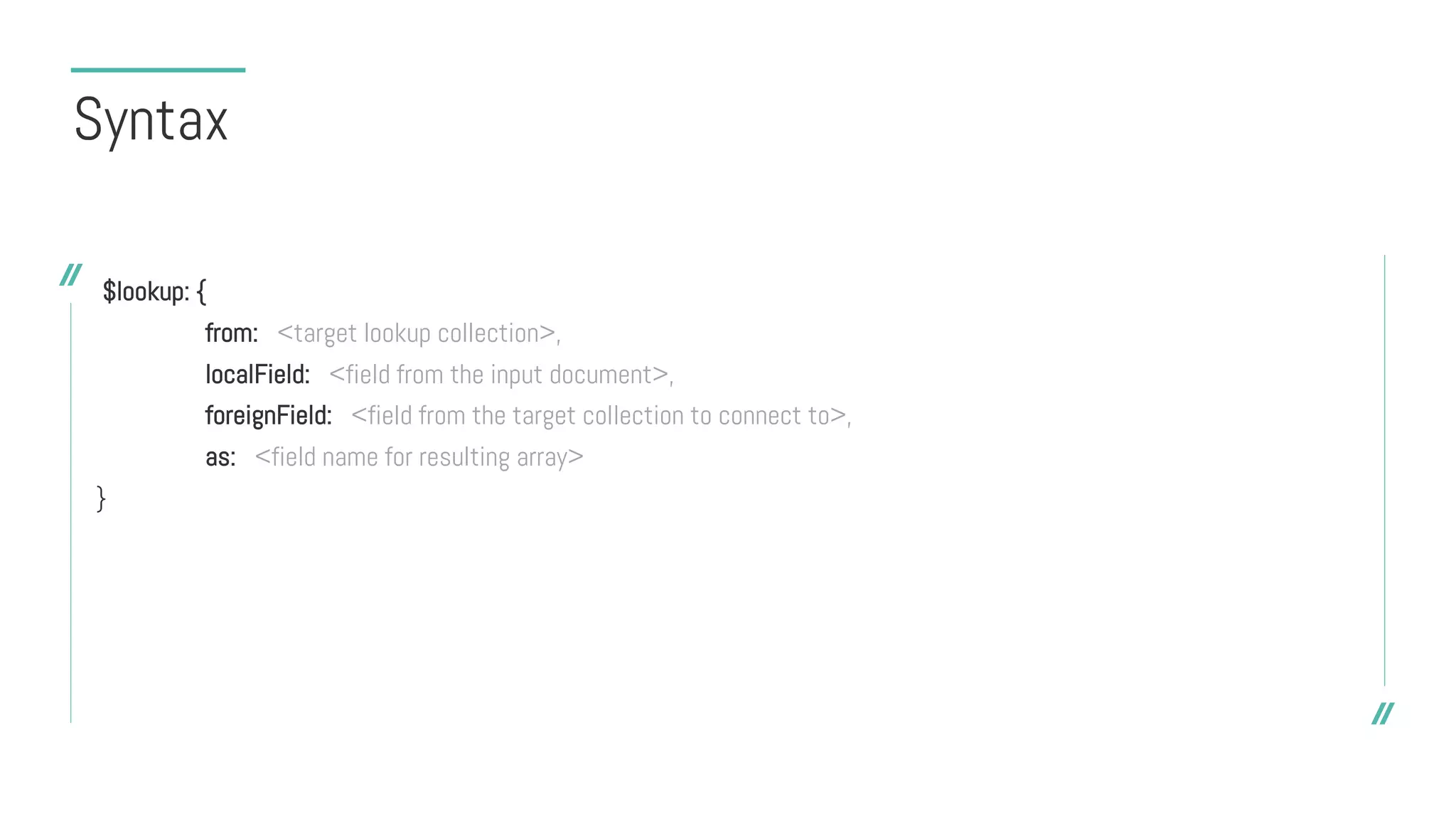

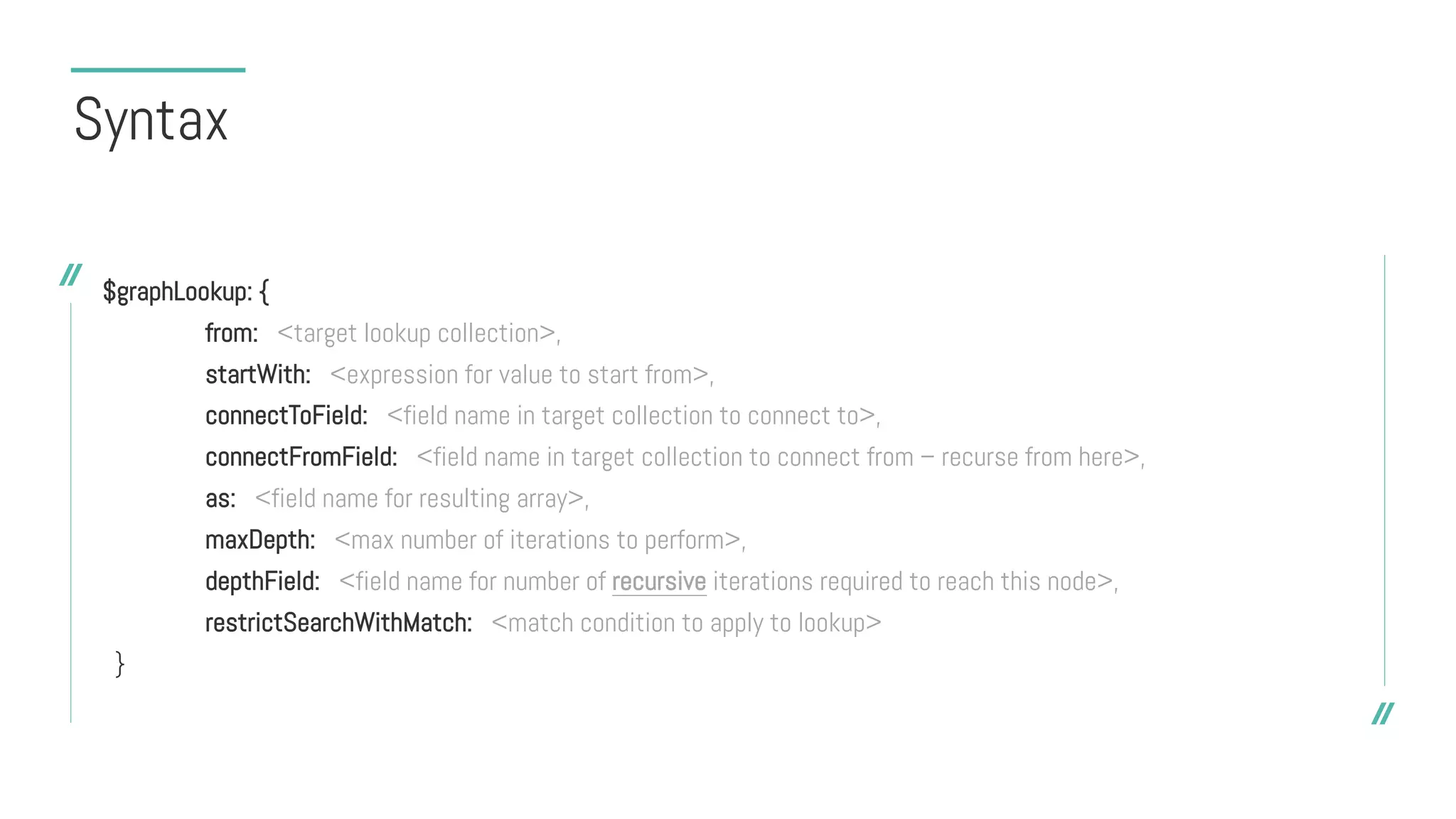
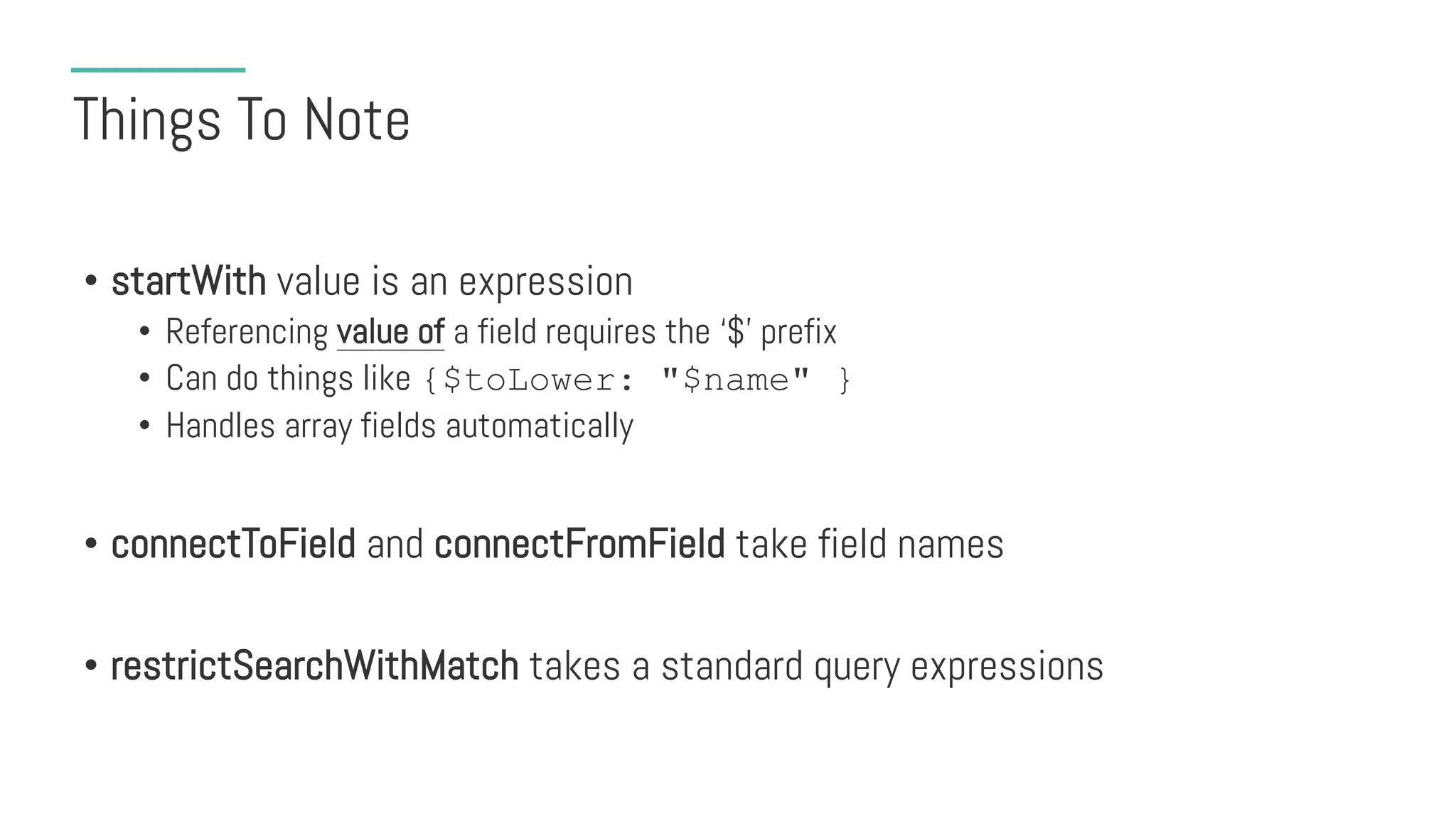
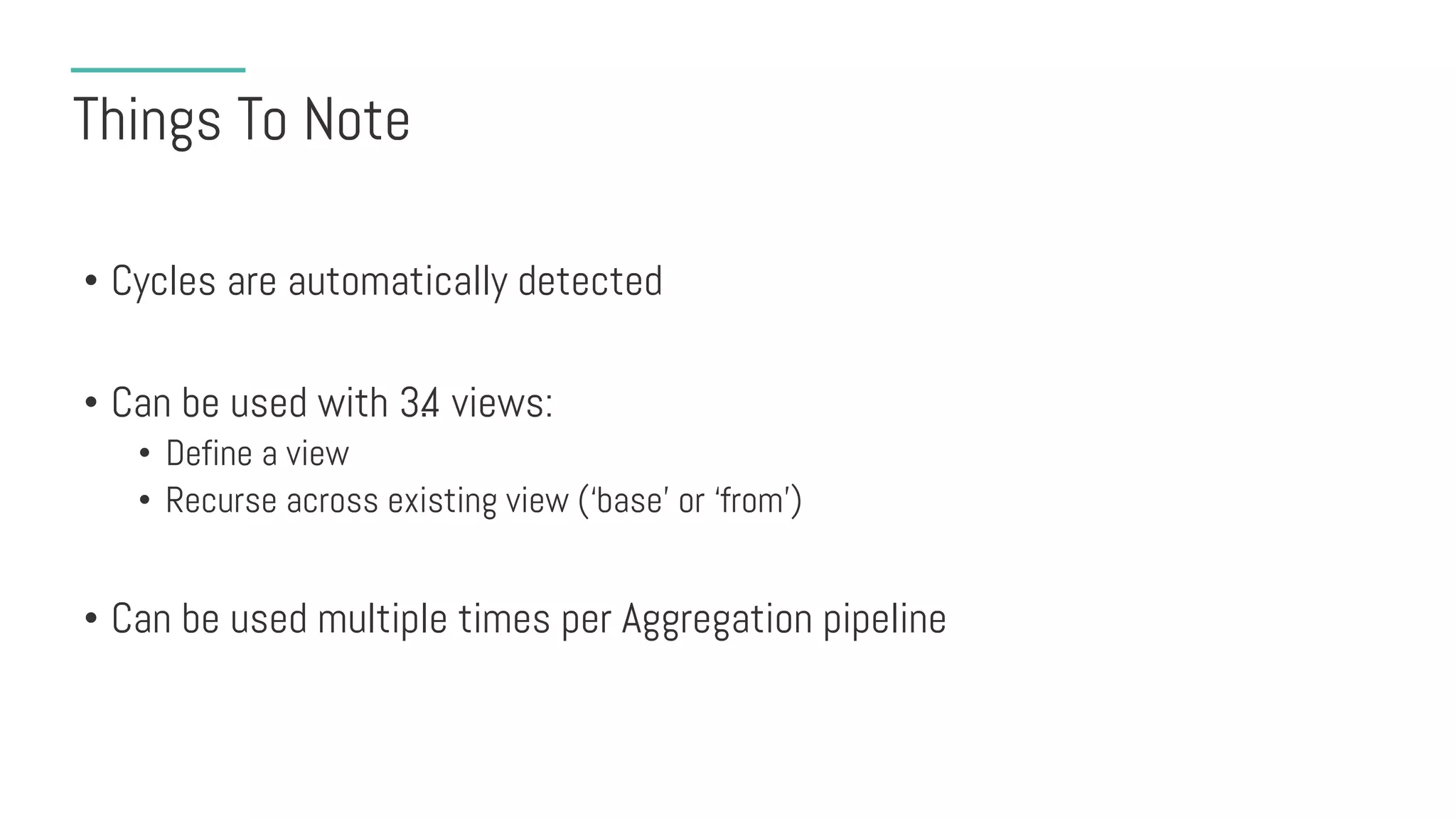


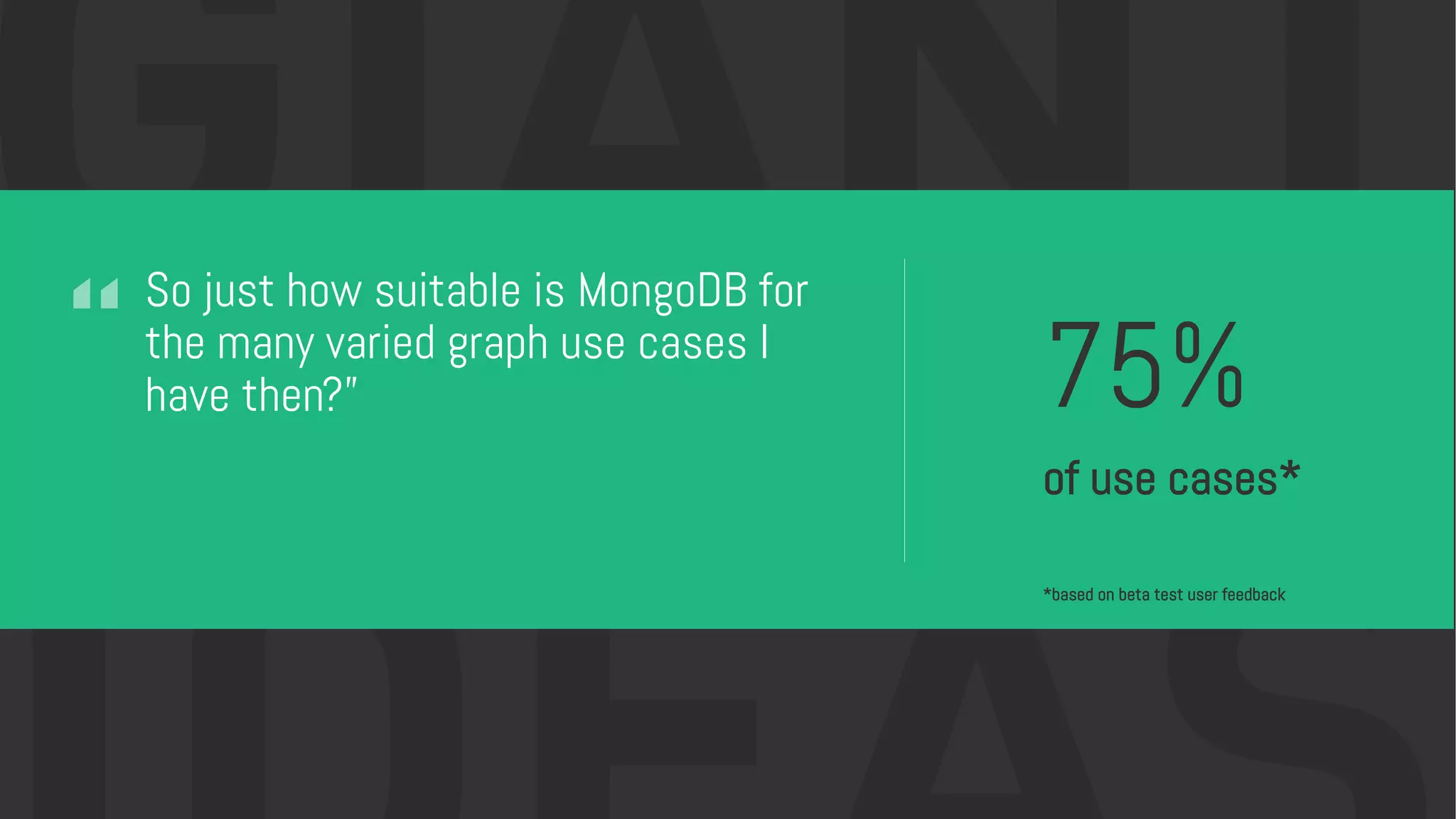
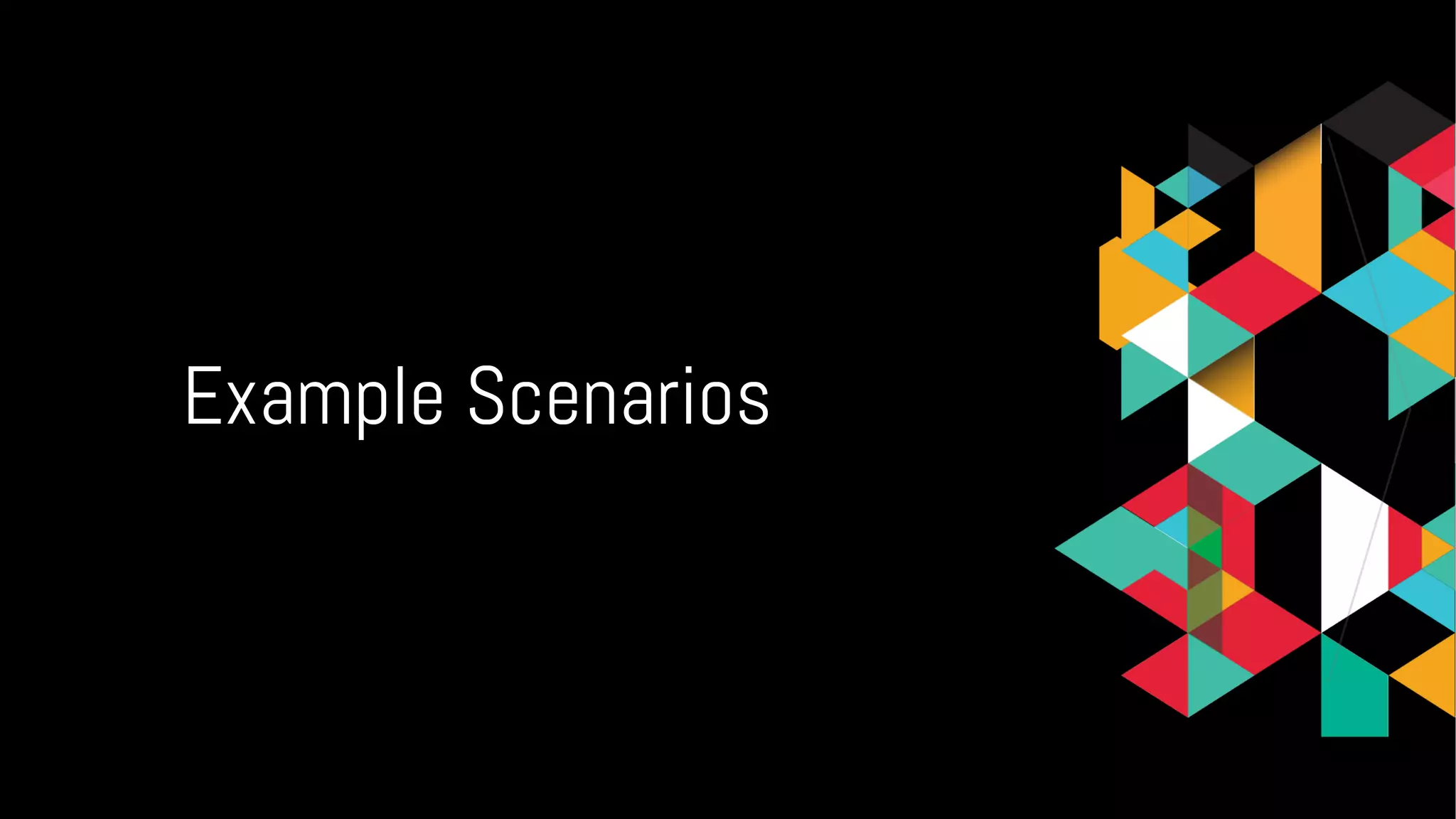
![Scenario: Calculate Friend Network
{
_id: 0,
name: "Bob Smith",
friends: ["Anna Jones", "Chris Green"]
},
{
_id: 1,
name: "Anna Jones",
friends: ["Bob Smith", "Chris Green", "Joe Lee"]
},
{
_id: 2,
name: "Chris Green",
friends: ["Anna Jones", "Bob Smith"]
}](https://image.slidesharecdn.com/charlessarrazingraphoperations-170209125805/75/Webinar-Working-with-Graph-Data-in-MongoDB-35-2048.jpg)
![Scenario: Calculate Friend Network
[
{
$match: { "name": "Bob Smith" }
},
{
$graphLookup: {
from: "contacts",
startWith: "$friends",
connectToField: "name",
connectFromField: "friends”,
as: "socialNetwork"
}
},
{
$project: { name: 1, friends:1, socialNetwork: "$socialNetwork.name"}
}
]
This field is an array
No maxDepth set](https://image.slidesharecdn.com/charlessarrazingraphoperations-170209125805/75/Webinar-Working-with-Graph-Data-in-MongoDB-36-2048.jpg)
![Scenario: Calculate Friend Network
{
"_id" : 0,
"name" : "Bob Smith",
"friends" : [
"Anna Jones",
"Chris Green"
],
"socialNetwork" : [
"Joe Lee",
"Fred Brown",
"Bob Smith",
"Chris Green",
"Anna Jones"
]
}
Array](https://image.slidesharecdn.com/charlessarrazingraphoperations-170209125805/75/Webinar-Working-with-Graph-Data-in-MongoDB-37-2048.jpg)
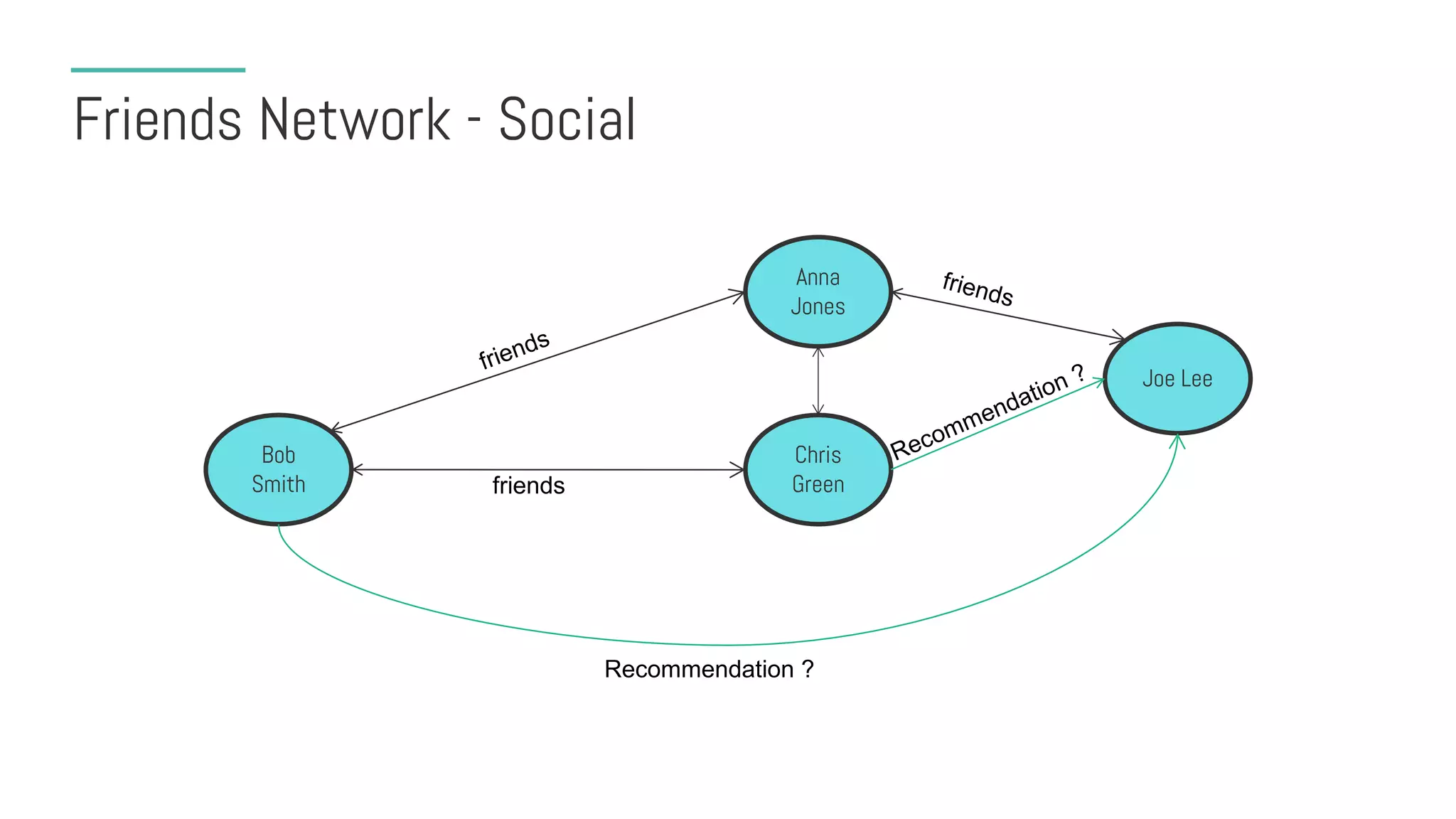
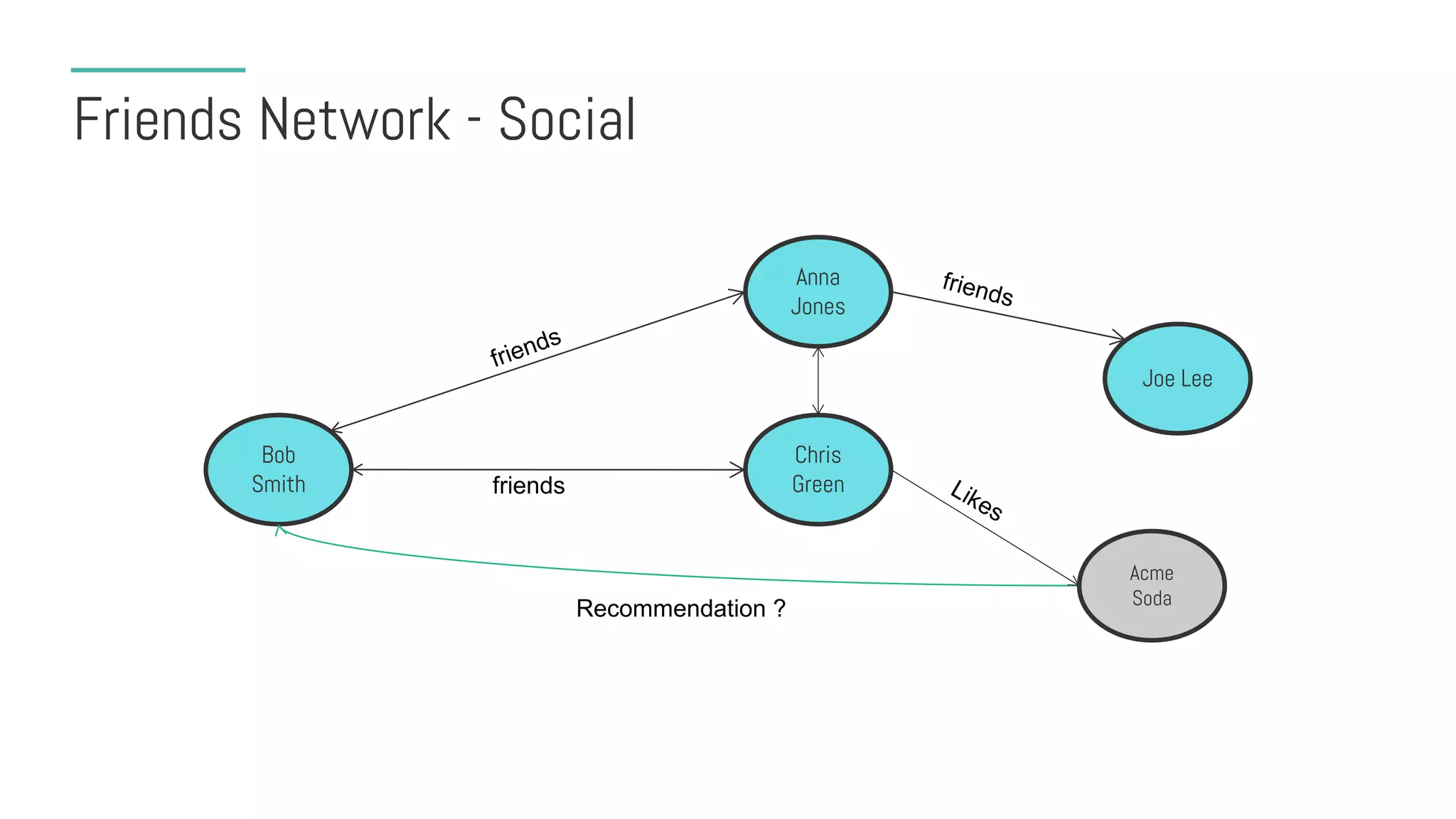
![Scenario: Determine Air Travel Options
ORD
JFK
BOS
PWM
LHR
{ "_id" : 0, "airport" : "JFK", "connects" : [ "BOS", "ORD" ] }
{ "_id" : 1, "airport" : "BOS", "connects" : [ "JFK", "PWM" ] }
{ "_id" : 2, "airport" : "ORD", "connects" : [ "JFK" ] }
{ "_id" : 3, "airport" : "PWM", "connects" : [ "BOS", "LHR" ] }
{ "_id" : 4, "airport" : "LHR", "connects" : [ "PWM" ] }](https://image.slidesharecdn.com/charlessarrazingraphoperations-170209125805/75/Webinar-Working-with-Graph-Data-in-MongoDB-40-2048.jpg)

![[
{
"$match": {"name":"Lucy"}
},
{
"$graphLookup": {
from: "airports",
startWith: "$nearestAirport",
connectToField: "airport",
connectFromField: "connects",
maxDepth: 2,
depthField: "numFlights",
as: "destinations”
}
}
]
Scenario: Determine Air Travel Options
Record the number of
recursions](https://image.slidesharecdn.com/charlessarrazingraphoperations-170209125805/75/Webinar-Working-with-Graph-Data-in-MongoDB-42-2048.jpg)
![{
name: "Lucy”,
nearestAirport: "JFK",
destinations: [
{ _id: 0, airport: "JFK", connects: ["BOS", "ORD"], numFlights: 0 },
{ _id: 1, airport: "BOS", connects: ["JFK", "PWM"], numFlights: 1 },
{ _id: 2, airport: "ORD", connects: ["JFK"], numFlights: 1 },
{ _id: 3, airport: "PWM", connects: ["BOS", "LHR"], numFlights: 2 }
]
}
Scenario: Determine Air Travel Options
How many flights this
would take](https://image.slidesharecdn.com/charlessarrazingraphoperations-170209125805/75/Webinar-Working-with-Graph-Data-in-MongoDB-43-2048.jpg)
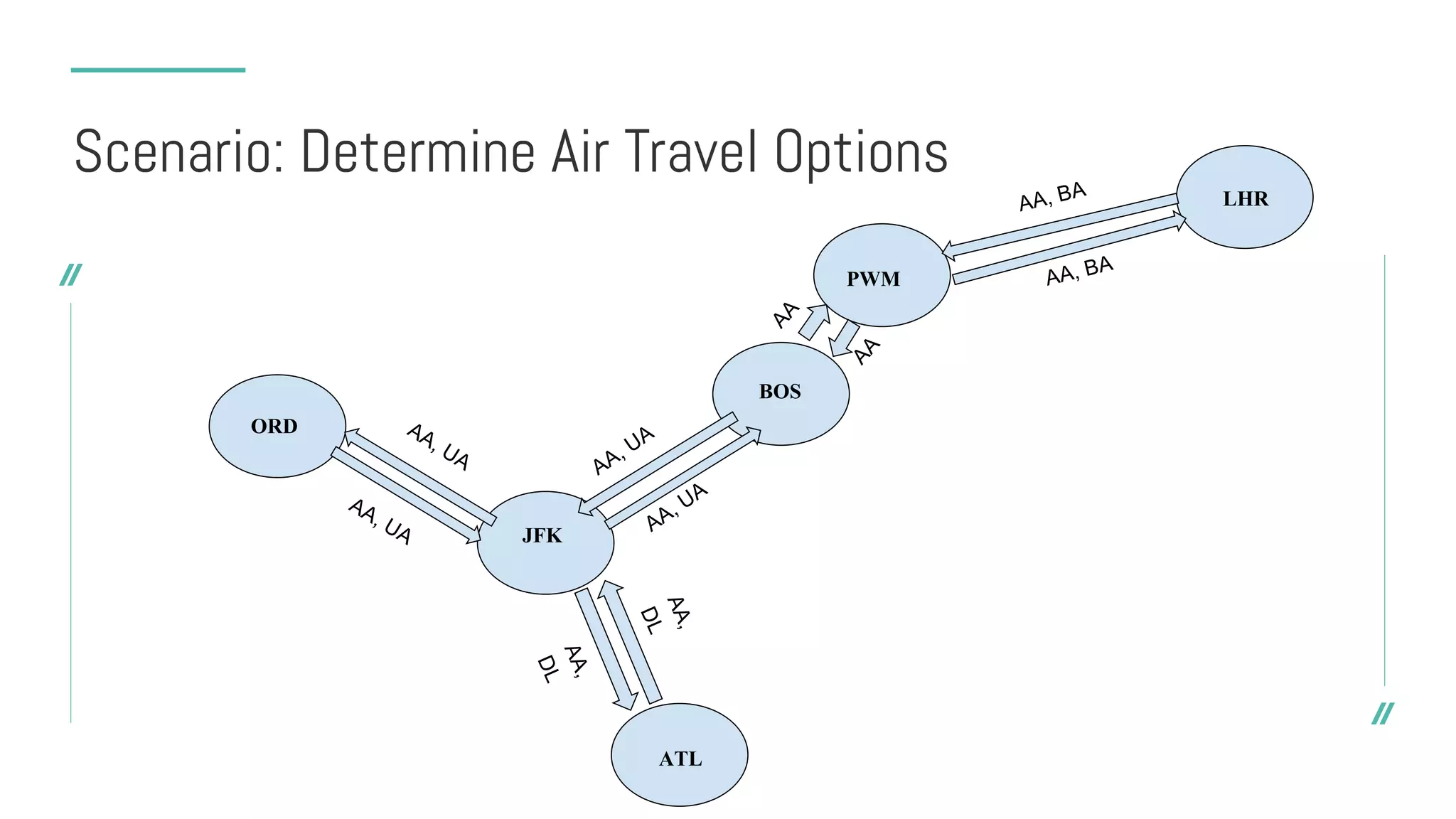
![{ "_id" : 0, "airport" : "JFK", "connects" : [
{ "to" : "BOS", "airlines" : [ "UA", "AA" ] },
{ "to" : "ORD", "airlines" : [ "UA", "AA" ] },
{ "to" : "ATL", "airlines" : [ "AA", "DL" ] }] }
{ "_id" : 1, "airport" : "BOS", "connects" : [
{ "to" : "JFK", "airlines" : [ "UA", "AA" ] },
{ "to" : "PWM", "airlines" : [ "AA" ] } ]] }
{ "_id" : 2, "airport" : "ORD", "connects" : [
{ "to" : "JFK", "airlines" : [ "UA”,"AA" ] }] }
{ "_id" : 3, "airport" : "PWM", "connects" : [
{ "to" : "BOS", "airlines" : [ "AA" ] }] }
Scenario: Determine Air Travel Options](https://image.slidesharecdn.com/charlessarrazingraphoperations-170209125805/75/Webinar-Working-with-Graph-Data-in-MongoDB-45-2048.jpg)
![[
{
"$match":{"name":"Lucy"}
},
{
"$graphLookup": {
from: "airports",
startWith: "$nearestAirport",
connectToField: "airport",
connectFromField: "connects.to”,
maxDepth: 2,
depthField: "numFlights”,
restrictSearchWithMatch: {"connects.airlines":"UA"},
as: ”UAdestinations"
}
}
]
Scenario: Determine Air Travel Options
We’ve added a filter](https://image.slidesharecdn.com/charlessarrazingraphoperations-170209125805/75/Webinar-Working-with-Graph-Data-in-MongoDB-46-2048.jpg)
![{
"name" : "Lucy",
"from" : "JFK",
"UAdestinations" : [
{ "_id" : 2, "airport" : "ORD", "numFlights" : NumberLong(1) },
{ "_id" : 1, "airport" : "BOS", "numFlights" : NumberLong(1) }
]
}
Scenario: Determine Air Travel Options](https://image.slidesharecdn.com/charlessarrazingraphoperations-170209125805/75/Webinar-Working-with-Graph-Data-in-MongoDB-47-2048.jpg)

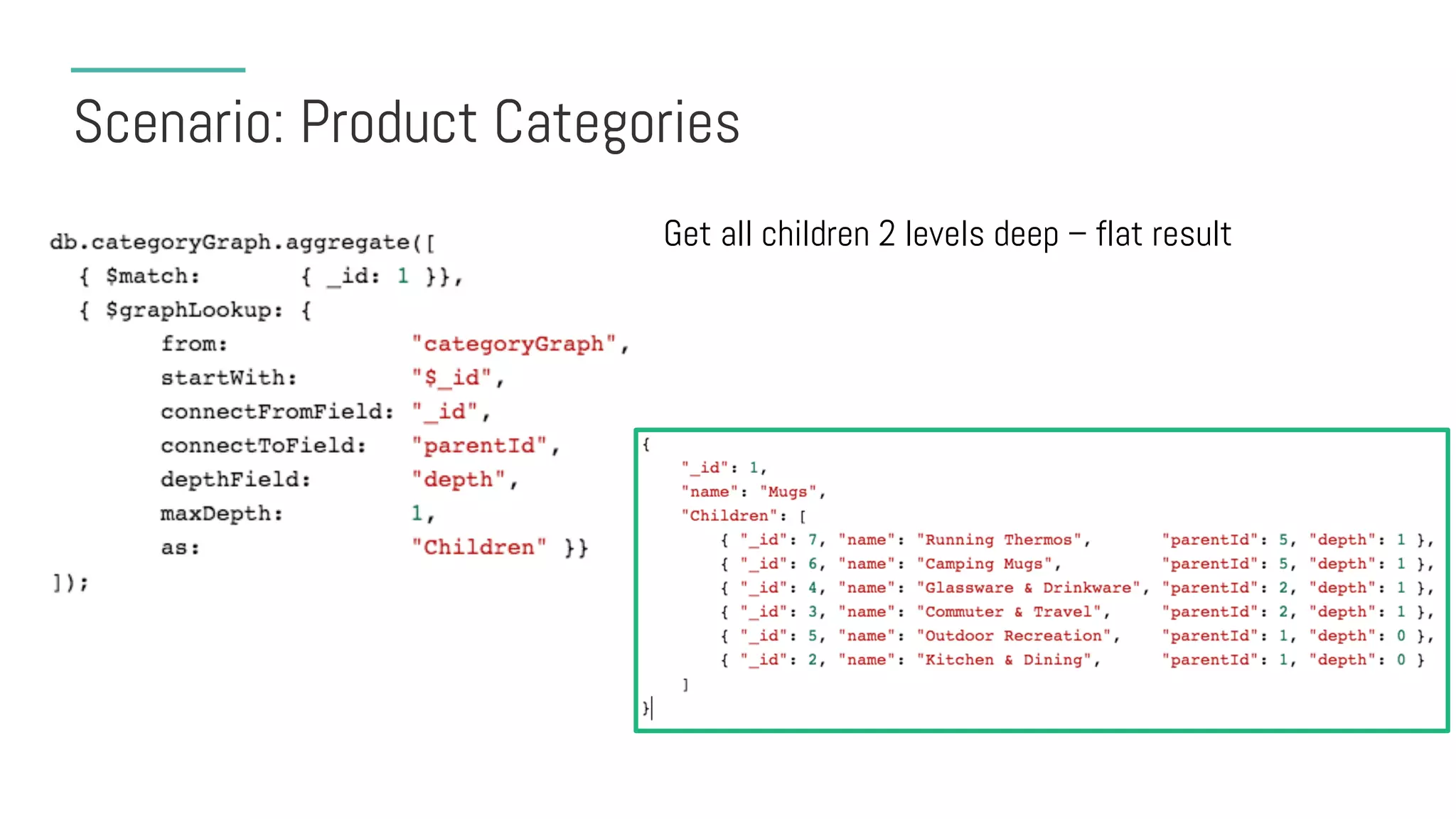
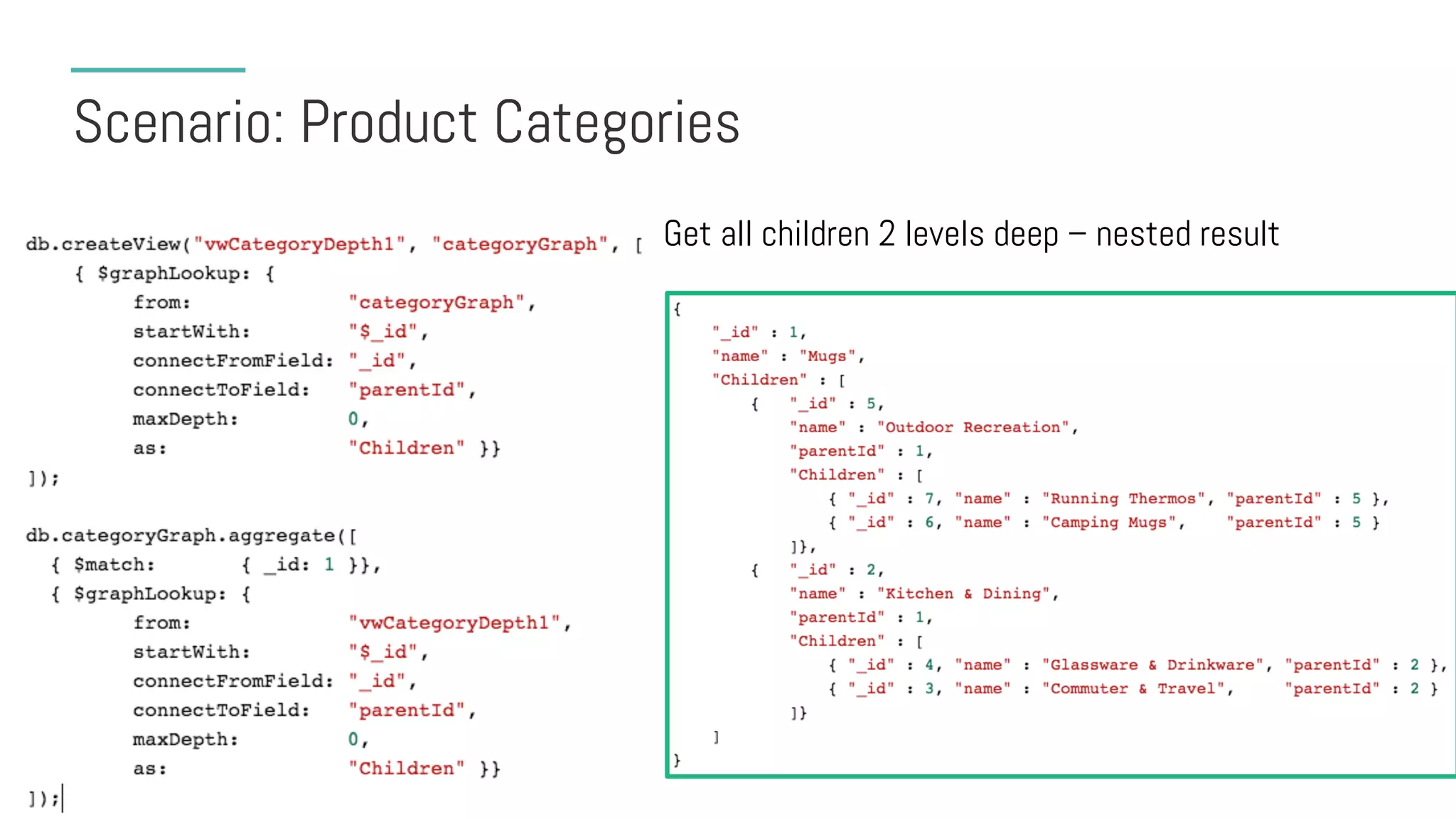
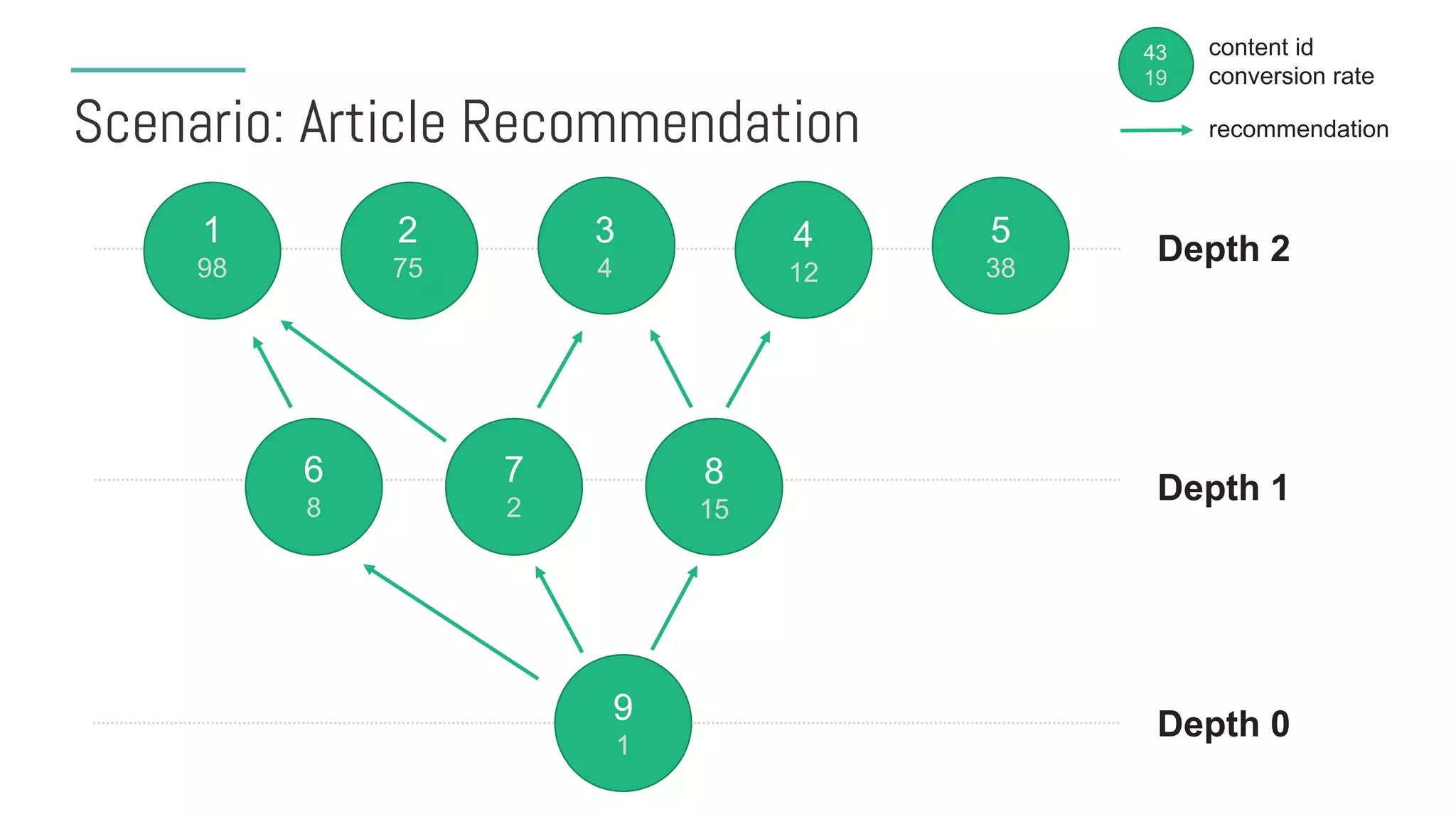
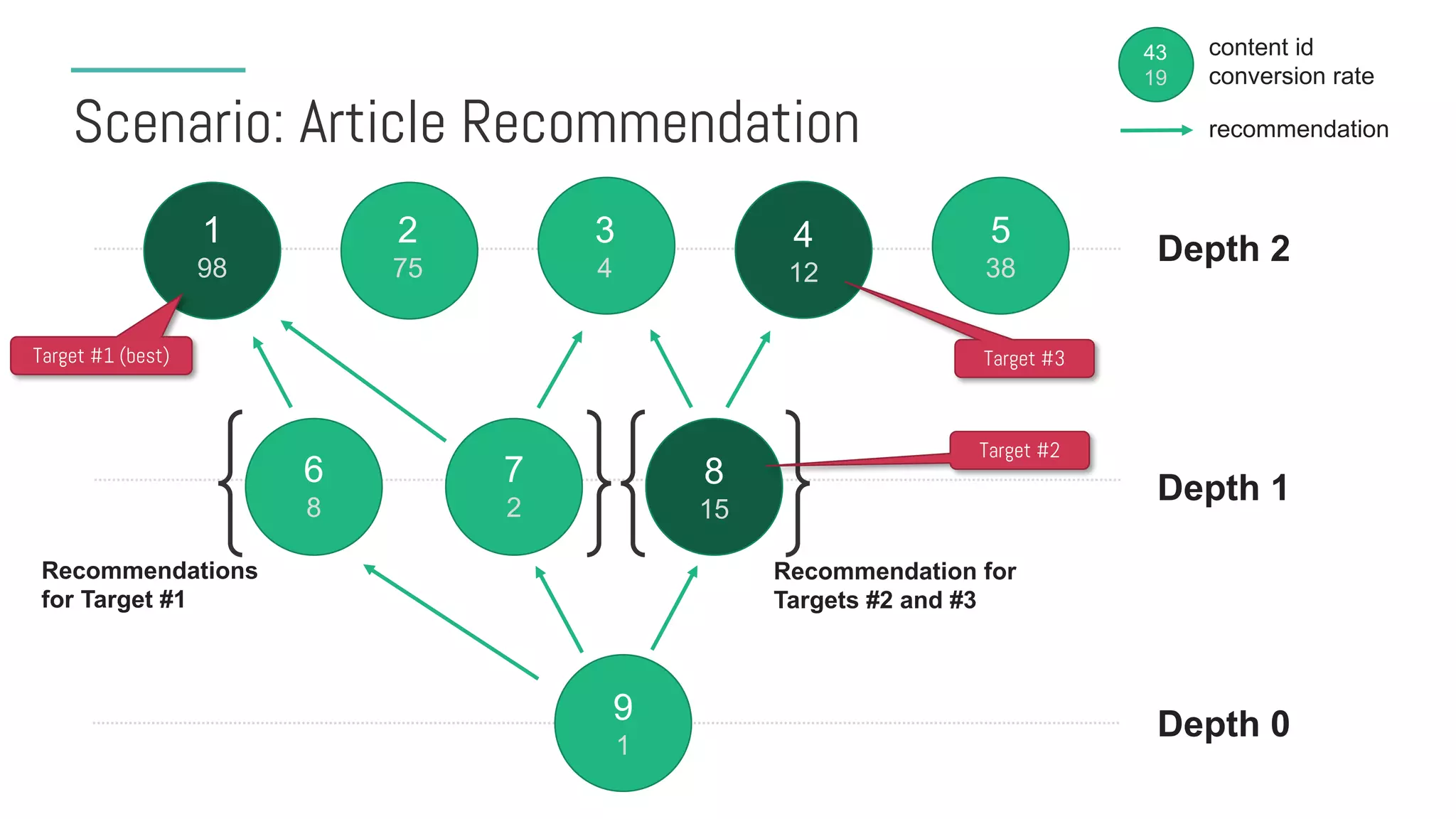
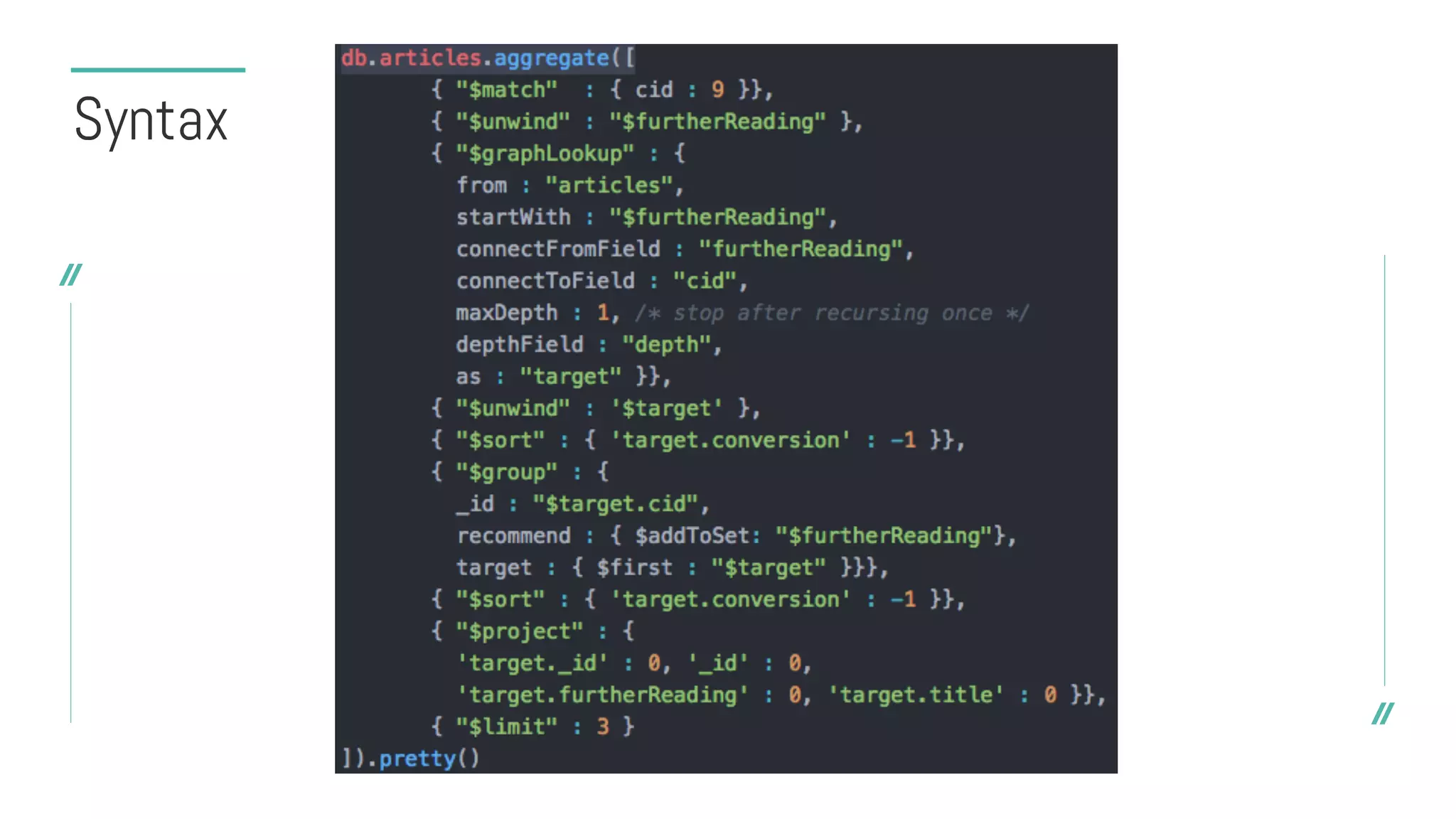
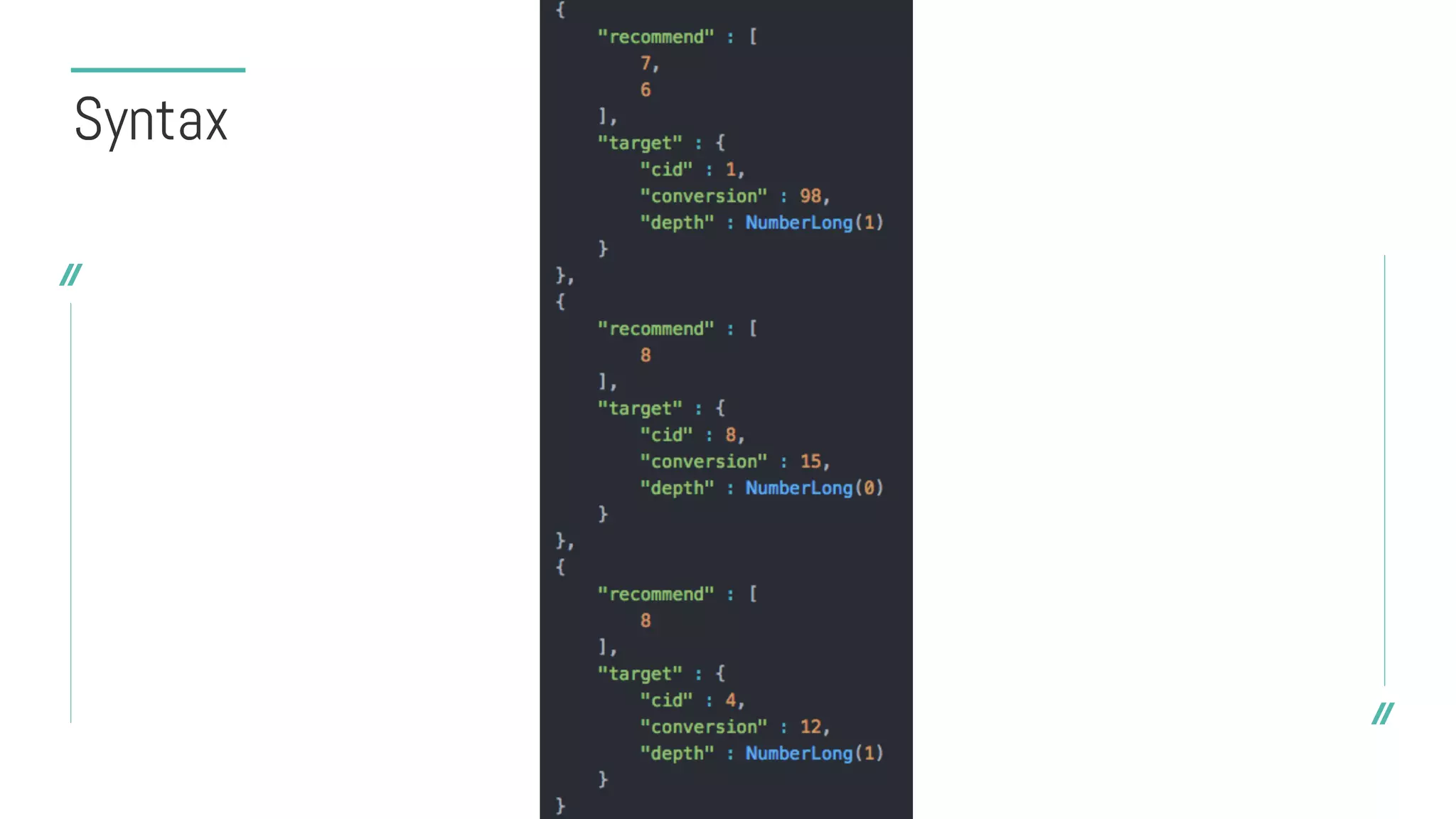
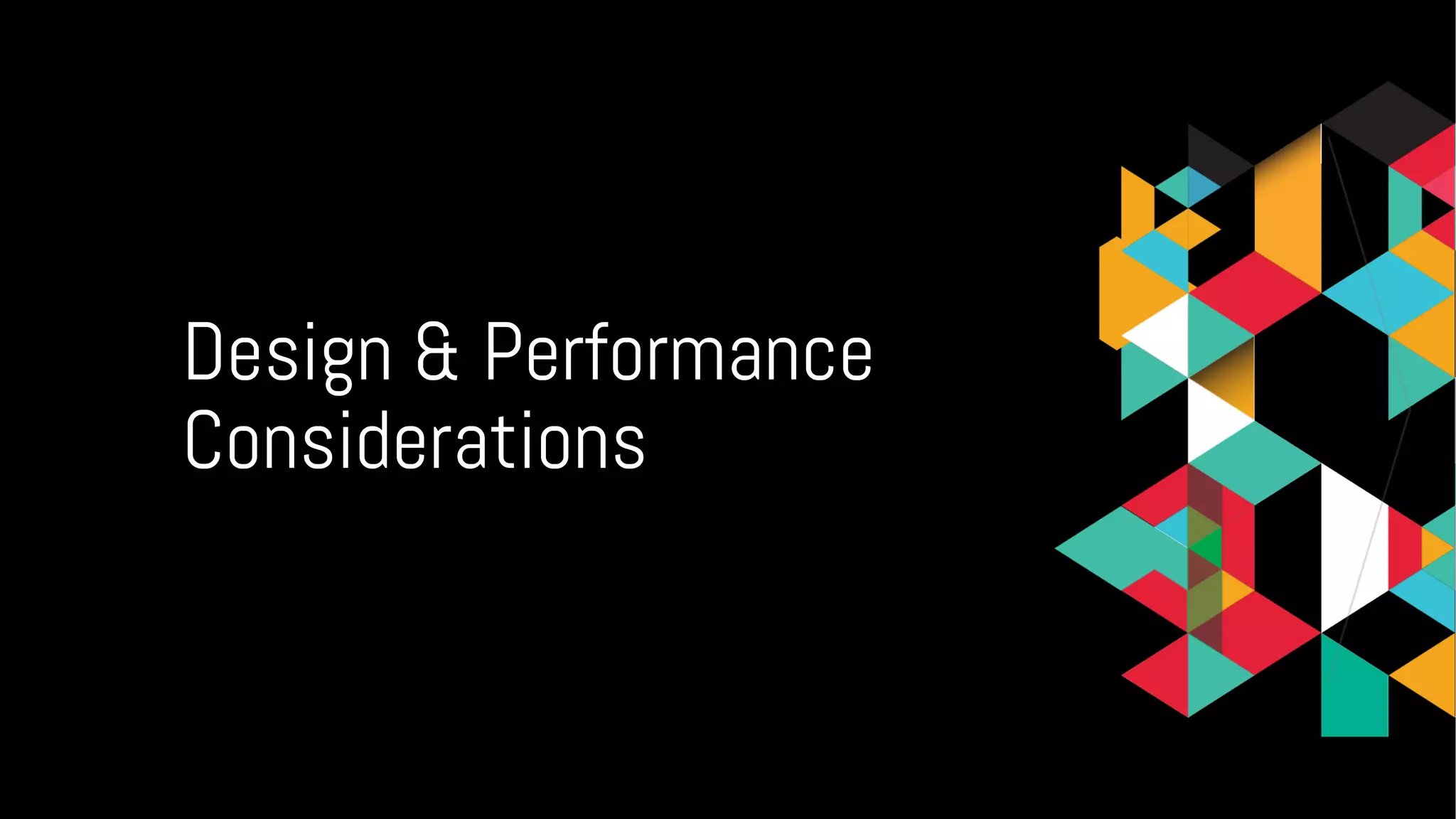
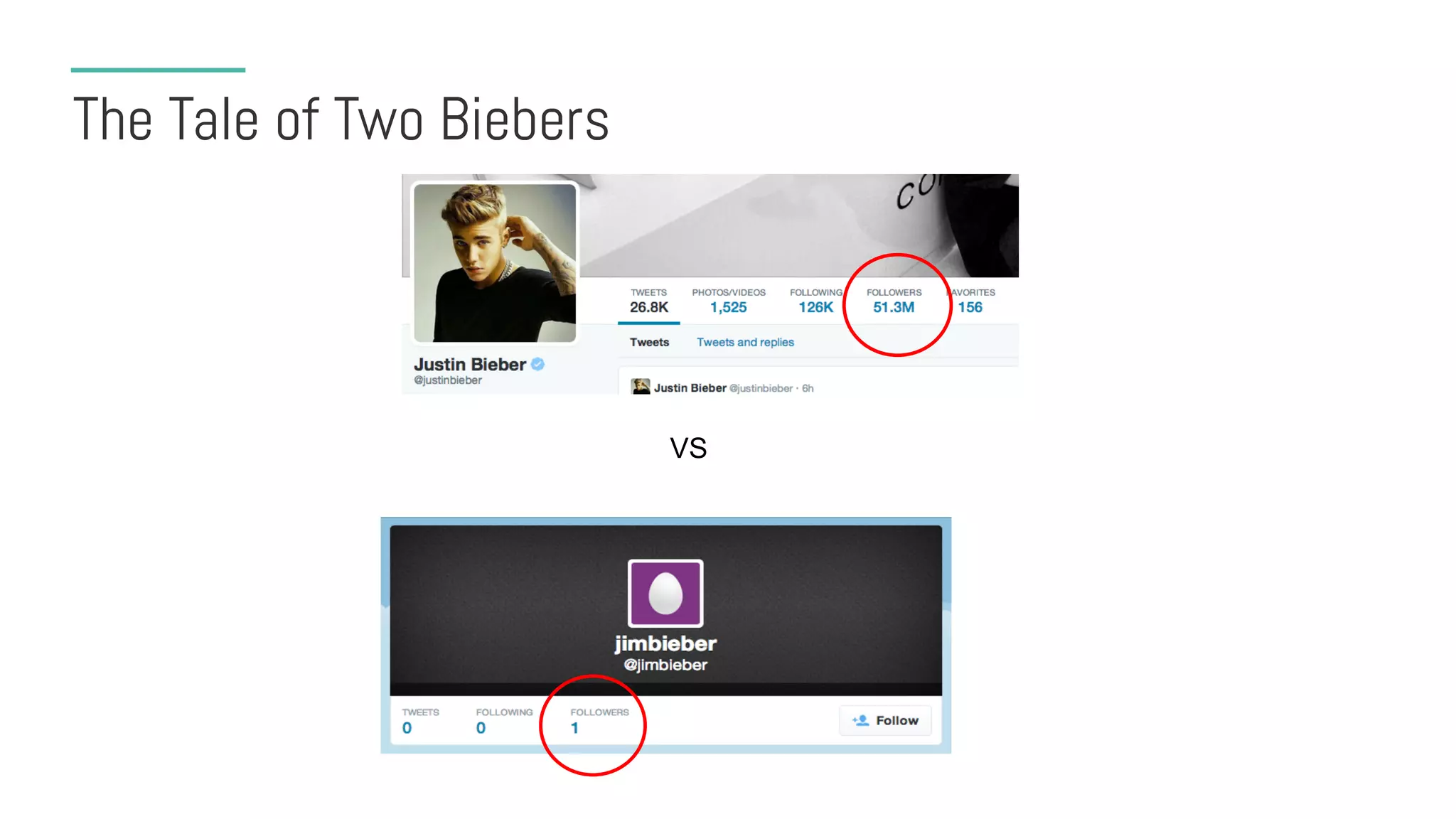

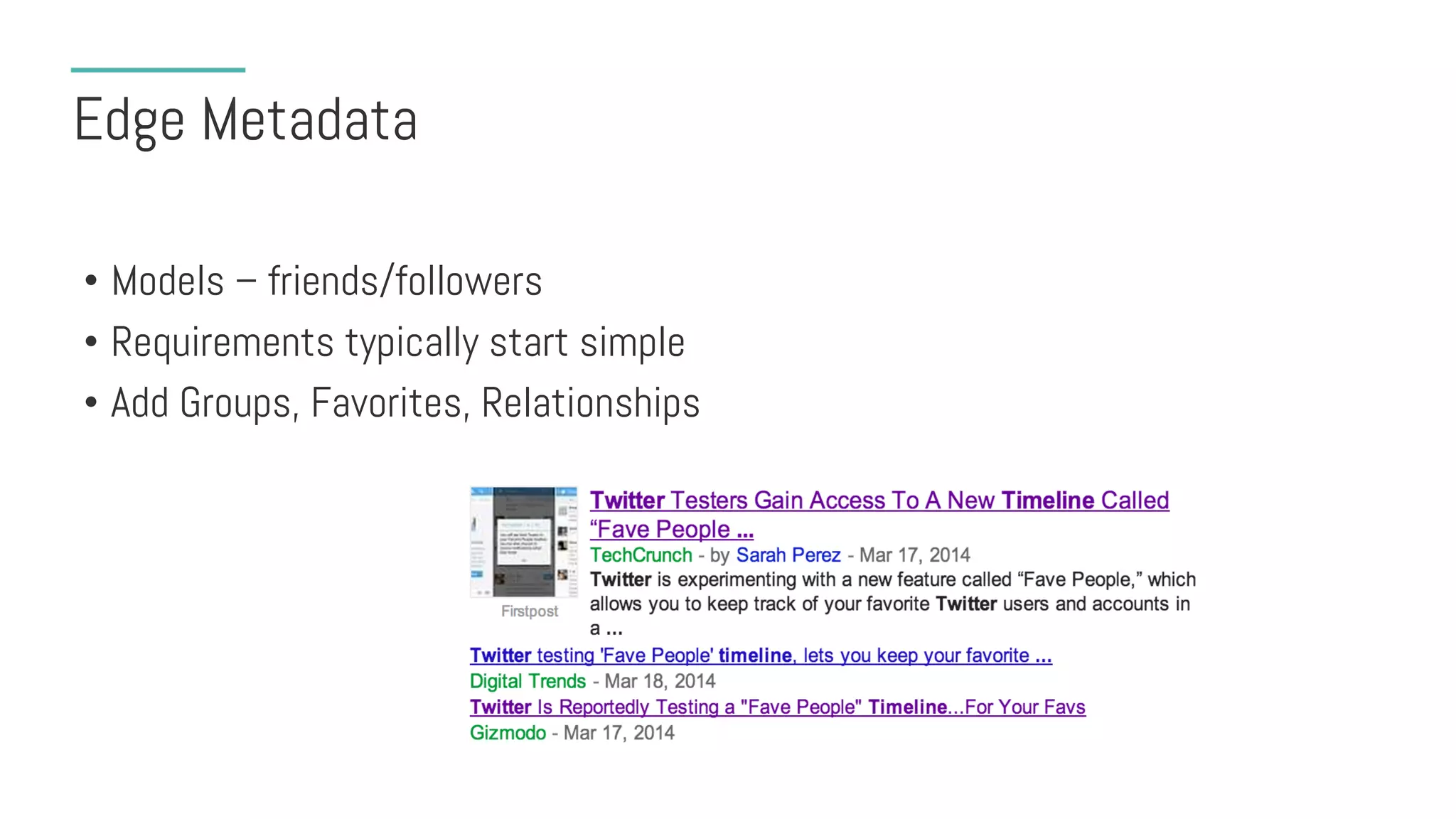
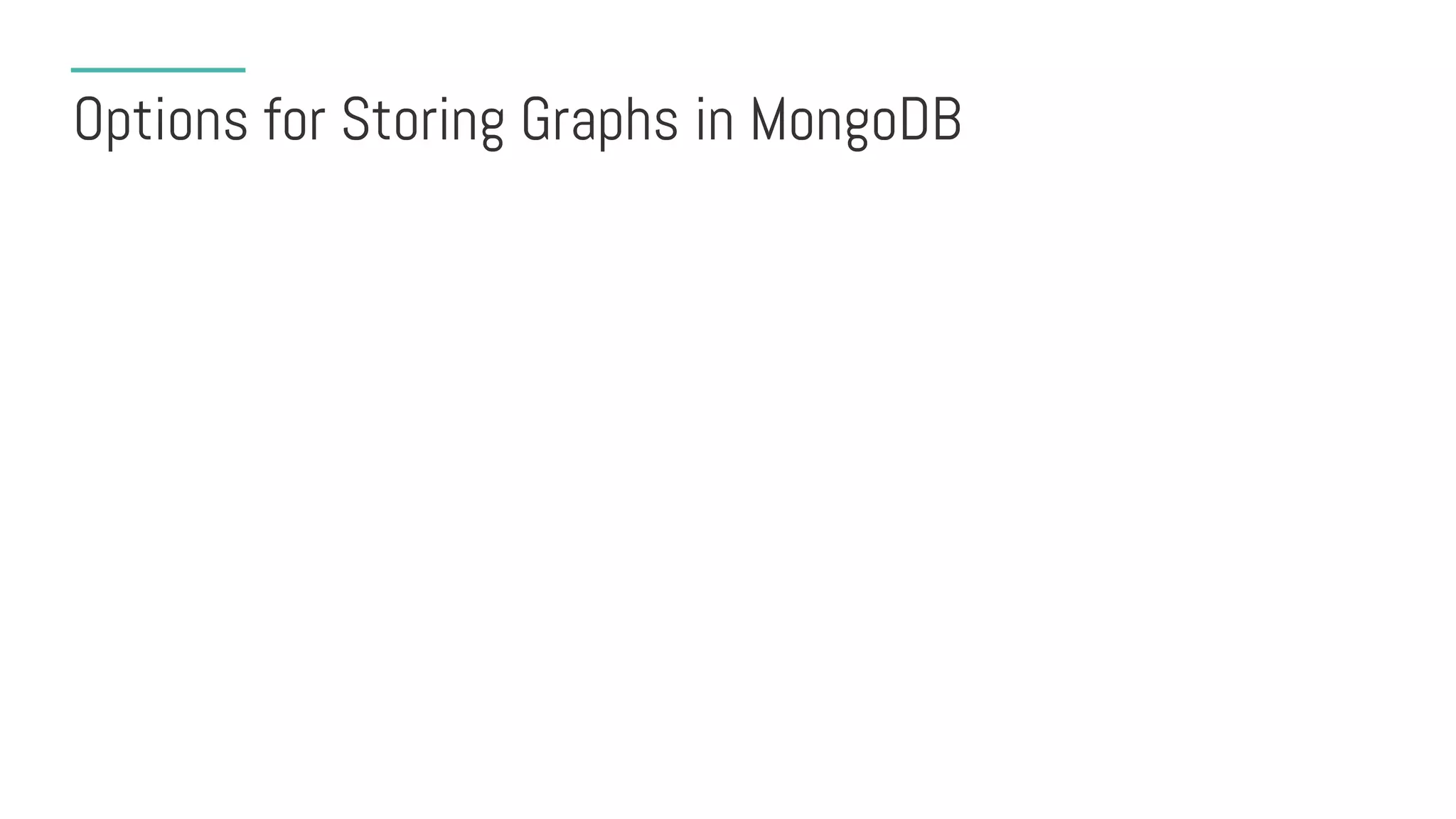
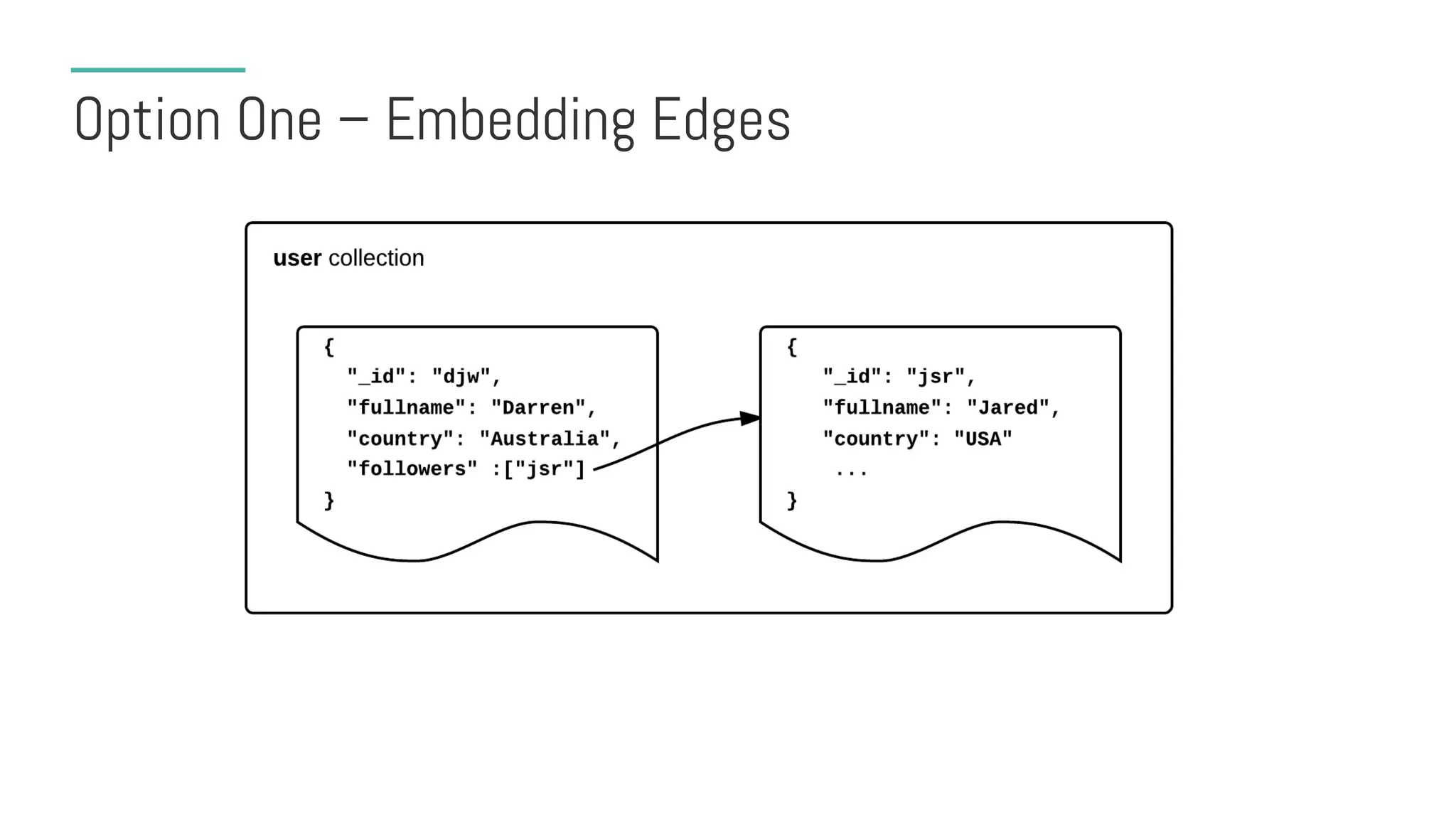
![Embedded Edge Arrays
• Storing connections with user (popular choice)
üMost compact form
üEfficient for reads
• However….
• User documents grow
• Upper limit on degree (document size)
• Difficult to annotate (and index) edge
{
"_id" : "djw",
"fullname" : "Darren Wood",
"country" : "Australia",
"followers" : [ "jsr", "ian"],
"following" : [ "jsr", "pete"]
}](https://image.slidesharecdn.com/charlessarrazingraphoperations-170209125805/75/Webinar-Working-with-Graph-Data-in-MongoDB-61-2048.jpg)
![Embedded Edge Arrays
• Creating Rich Graph Information
• Can become cumbersome
{
"_id" : "djw",
"fullname" : "Darren Wood",
"country" : "Australia",
"friends" : [
{"uid" : "jsr", "grp" : "school"},
{"uid" : "ian", "grp" : "work"} ]
}
{
"_id" : "djw",
"fullname" : "Darren Wood",
"country" : "Australia",
"friends" : [ "jsr", "ian"],
"group" : [ ”school", ”work"]
}](https://image.slidesharecdn.com/charlessarrazingraphoperations-170209125805/75/Webinar-Working-with-Graph-Data-in-MongoDB-62-2048.jpg)
